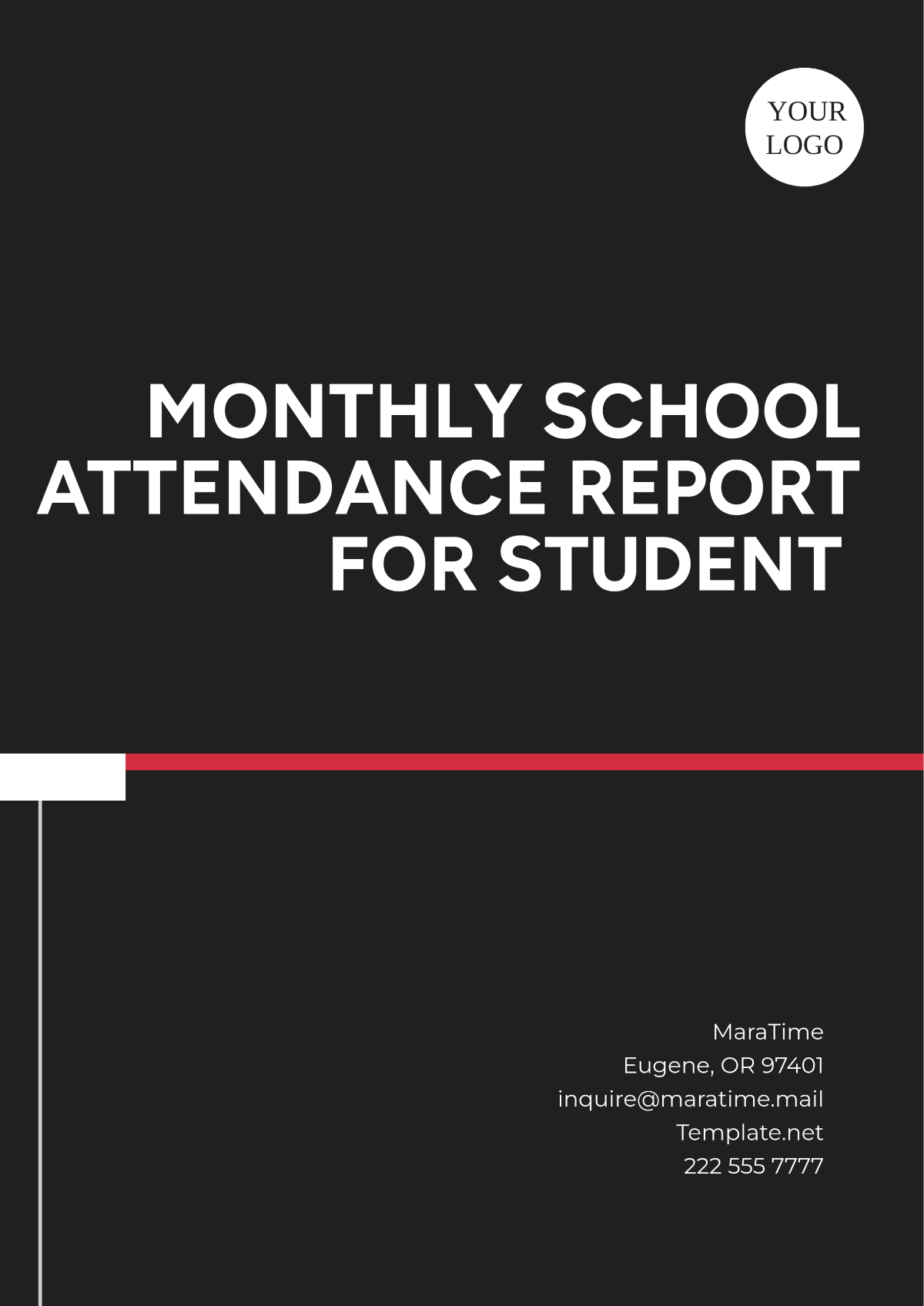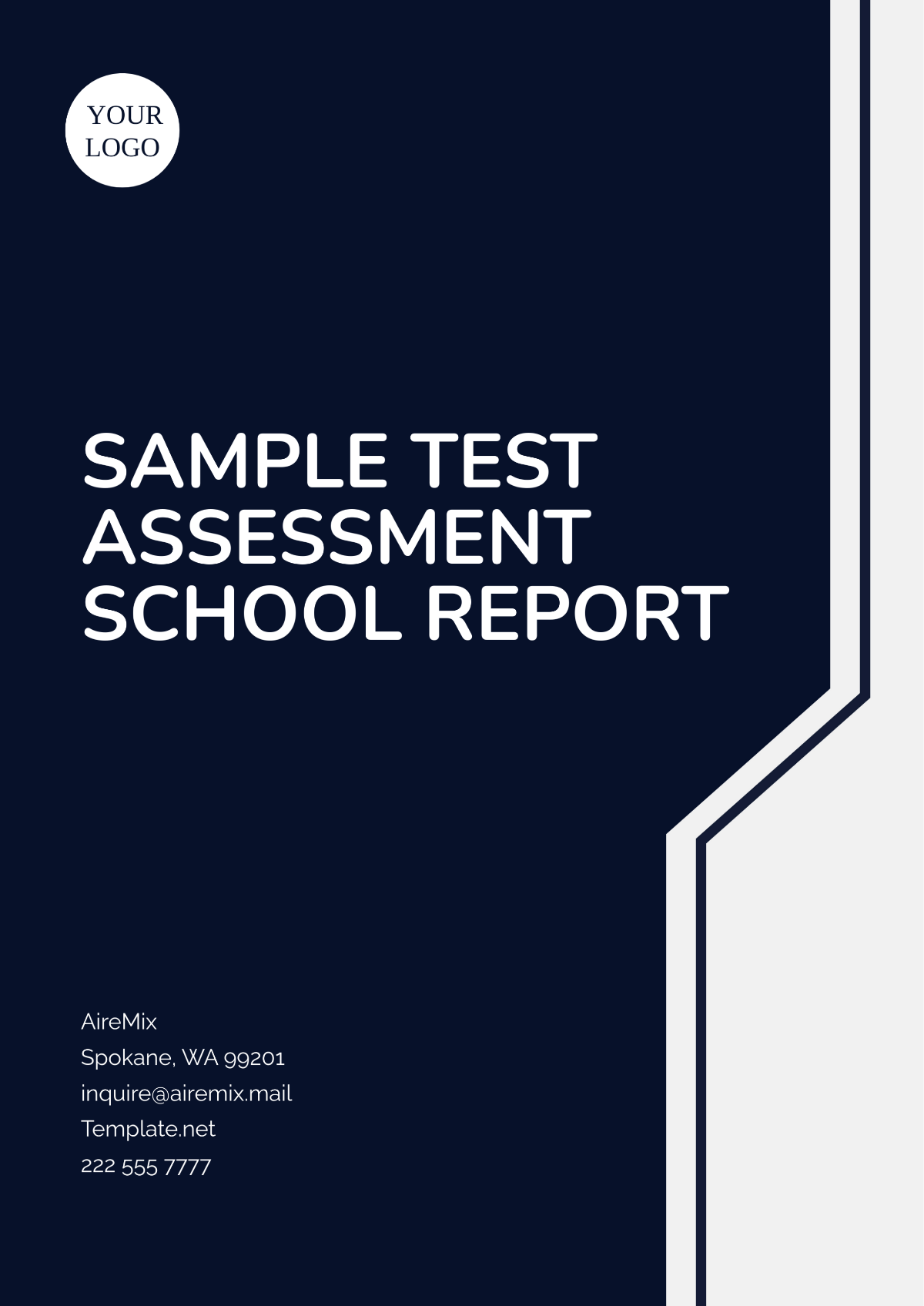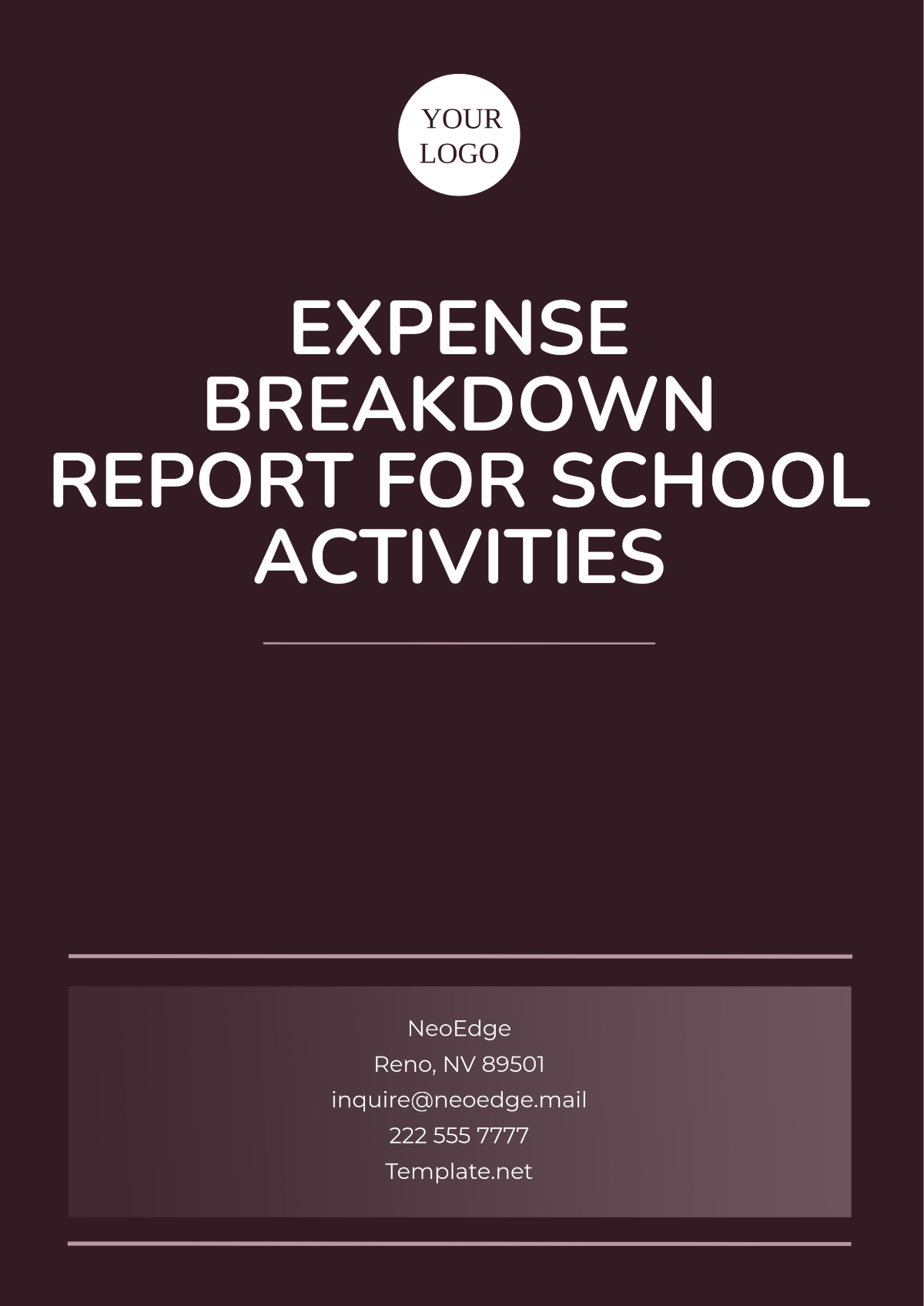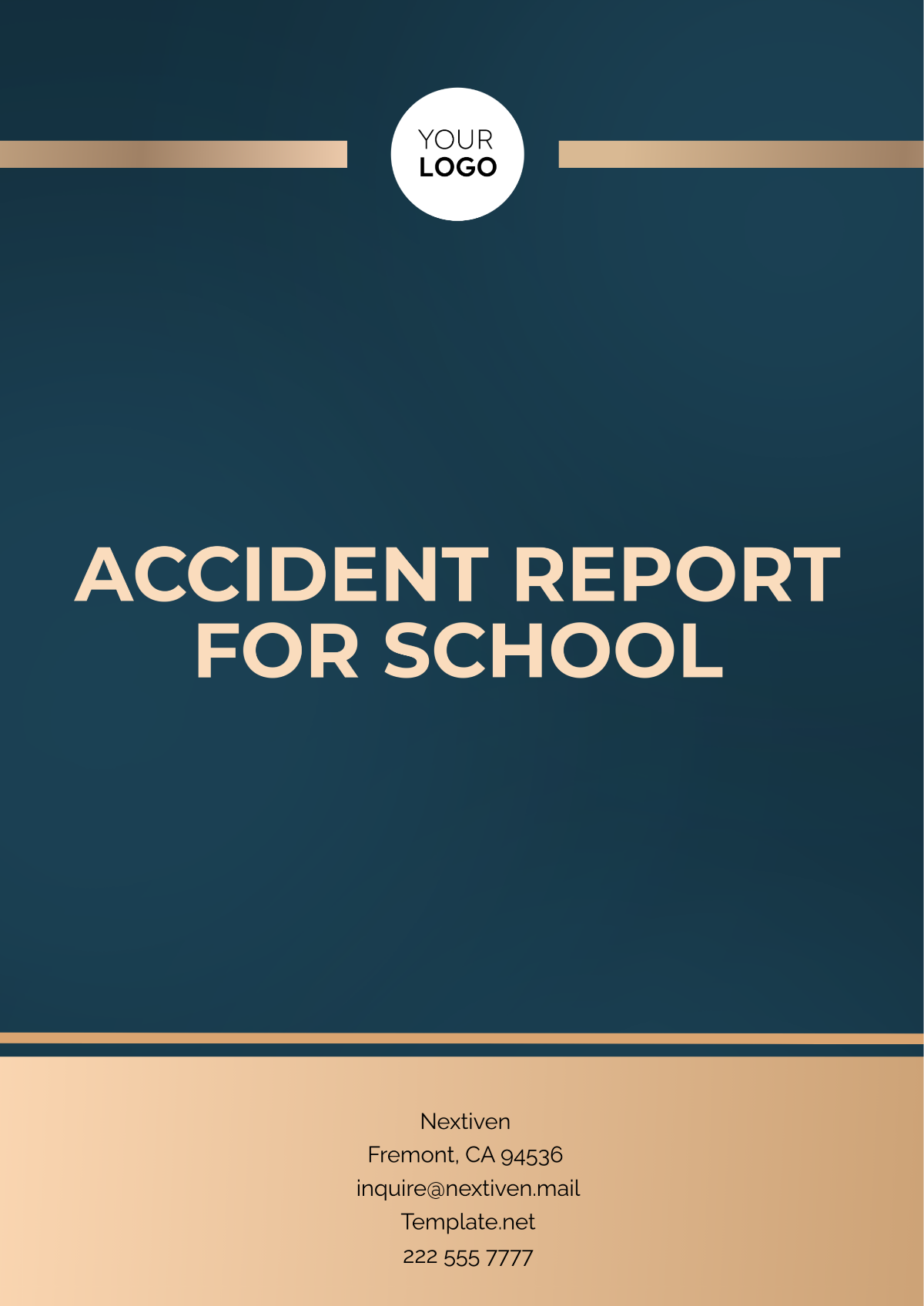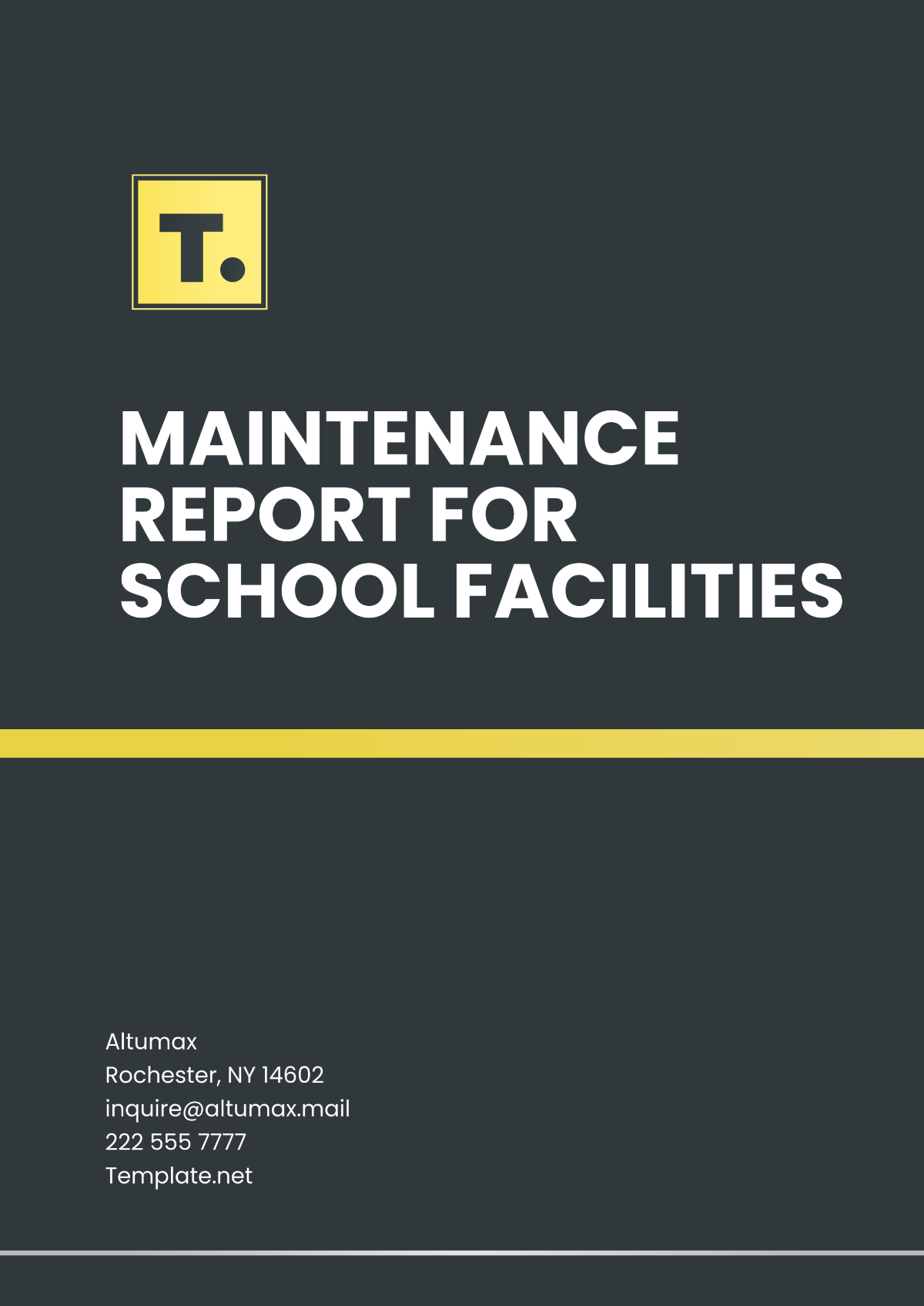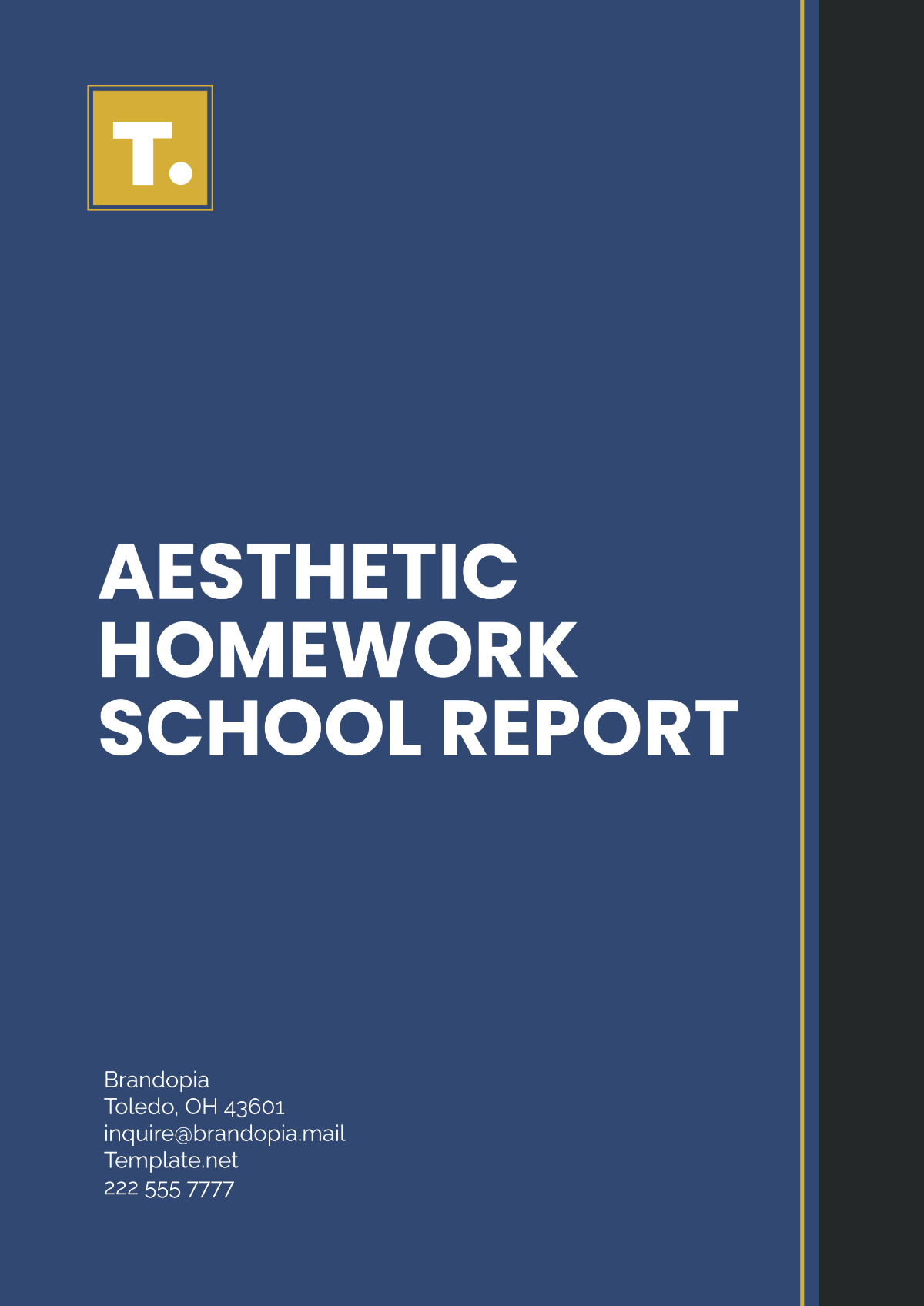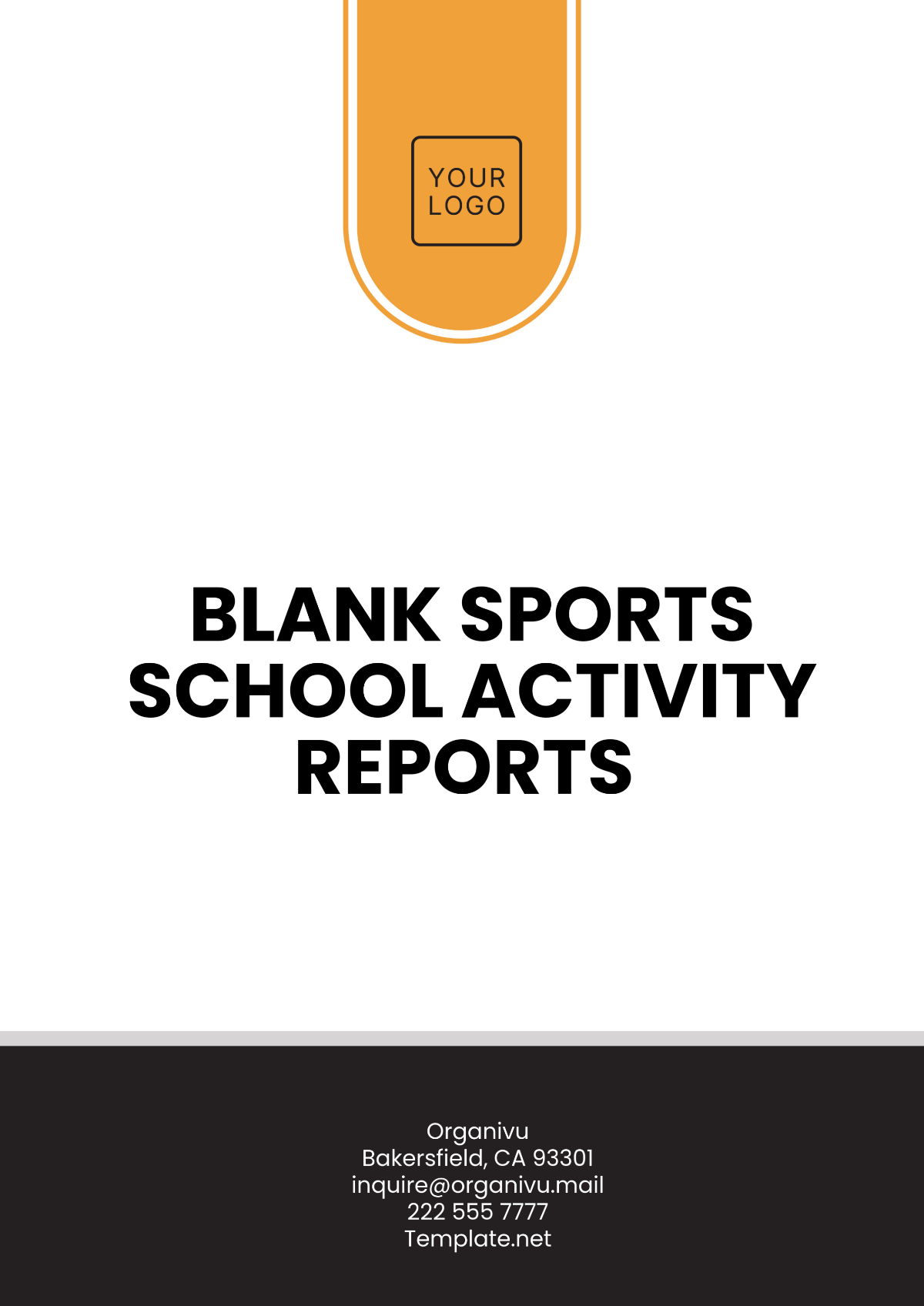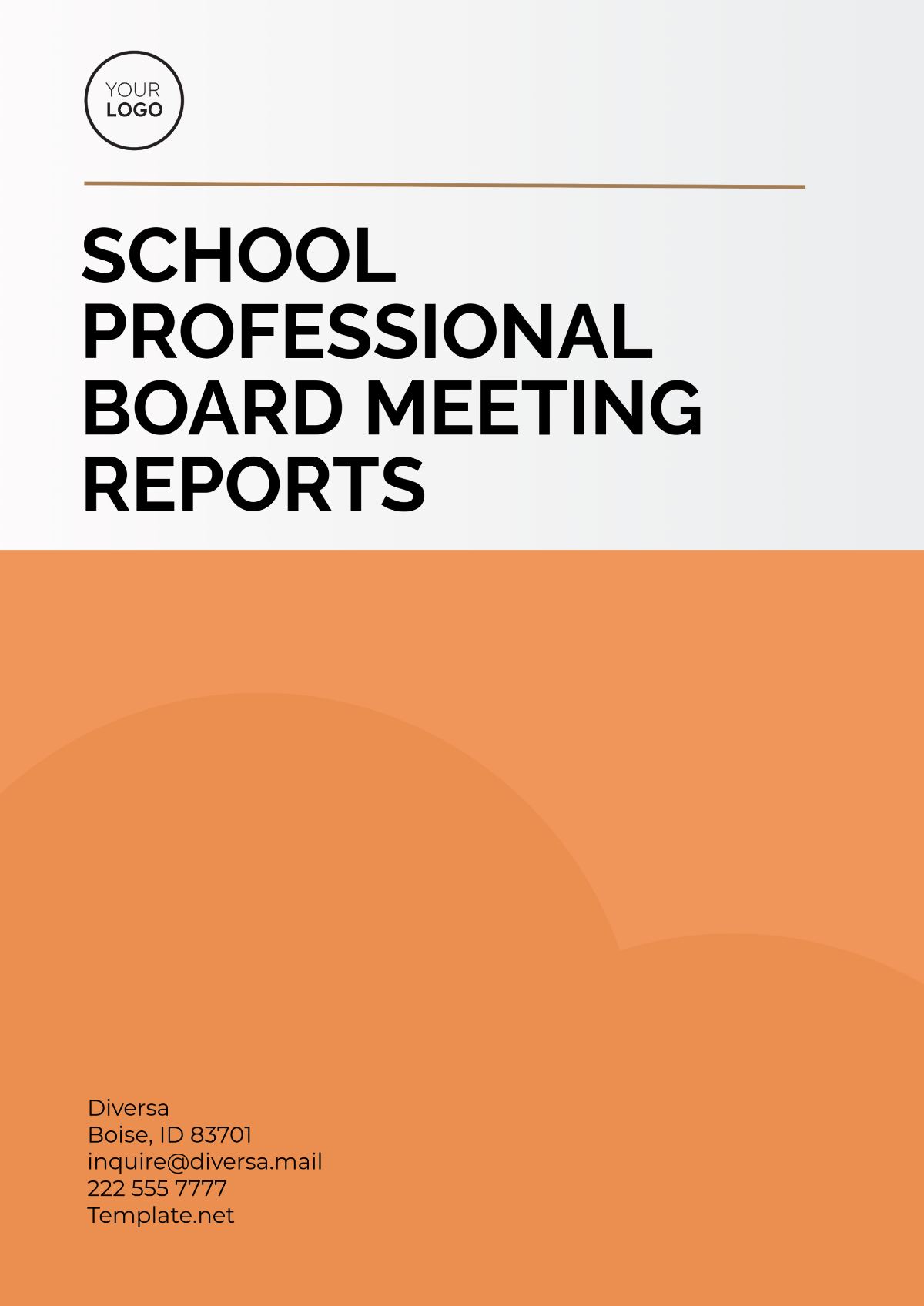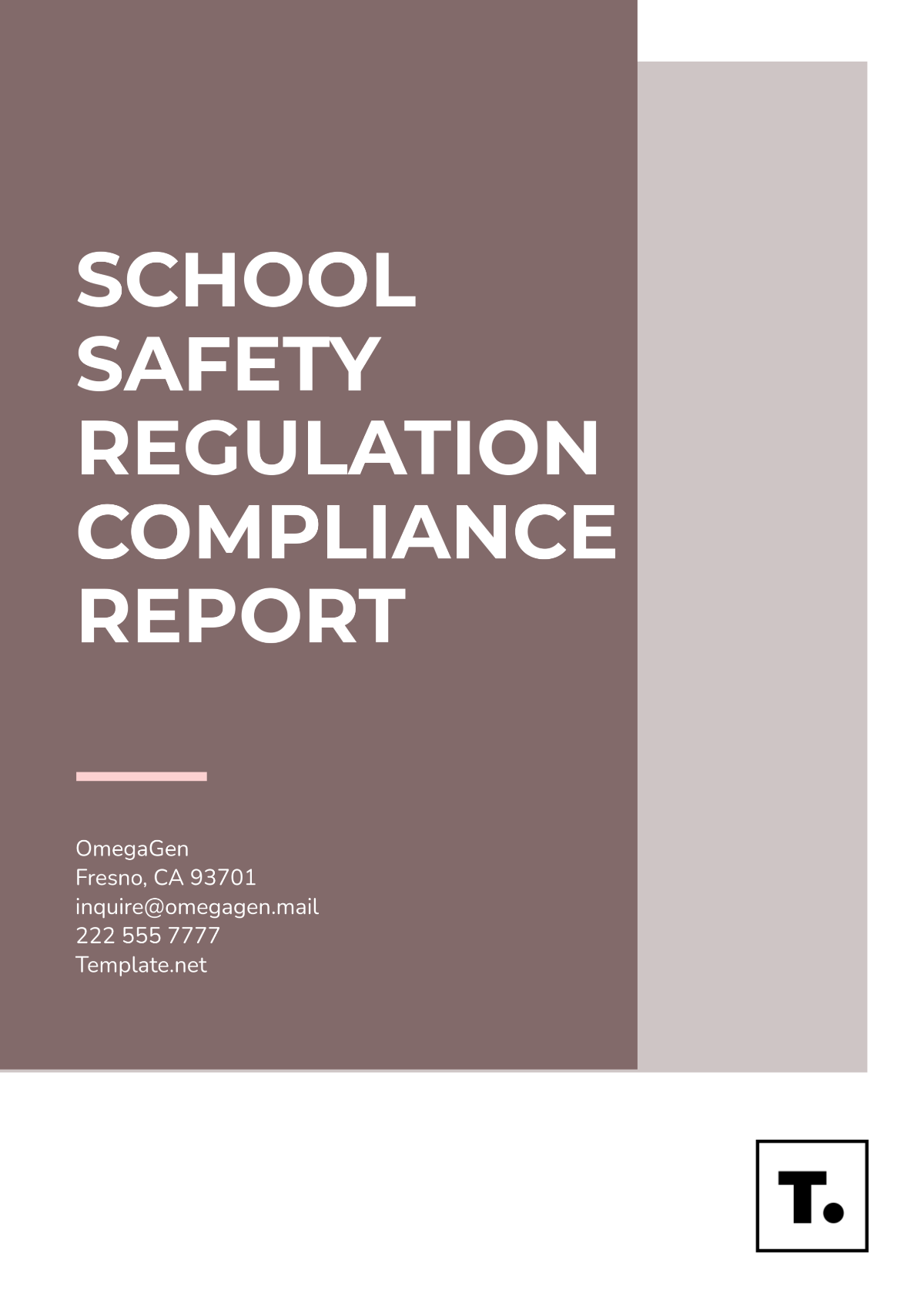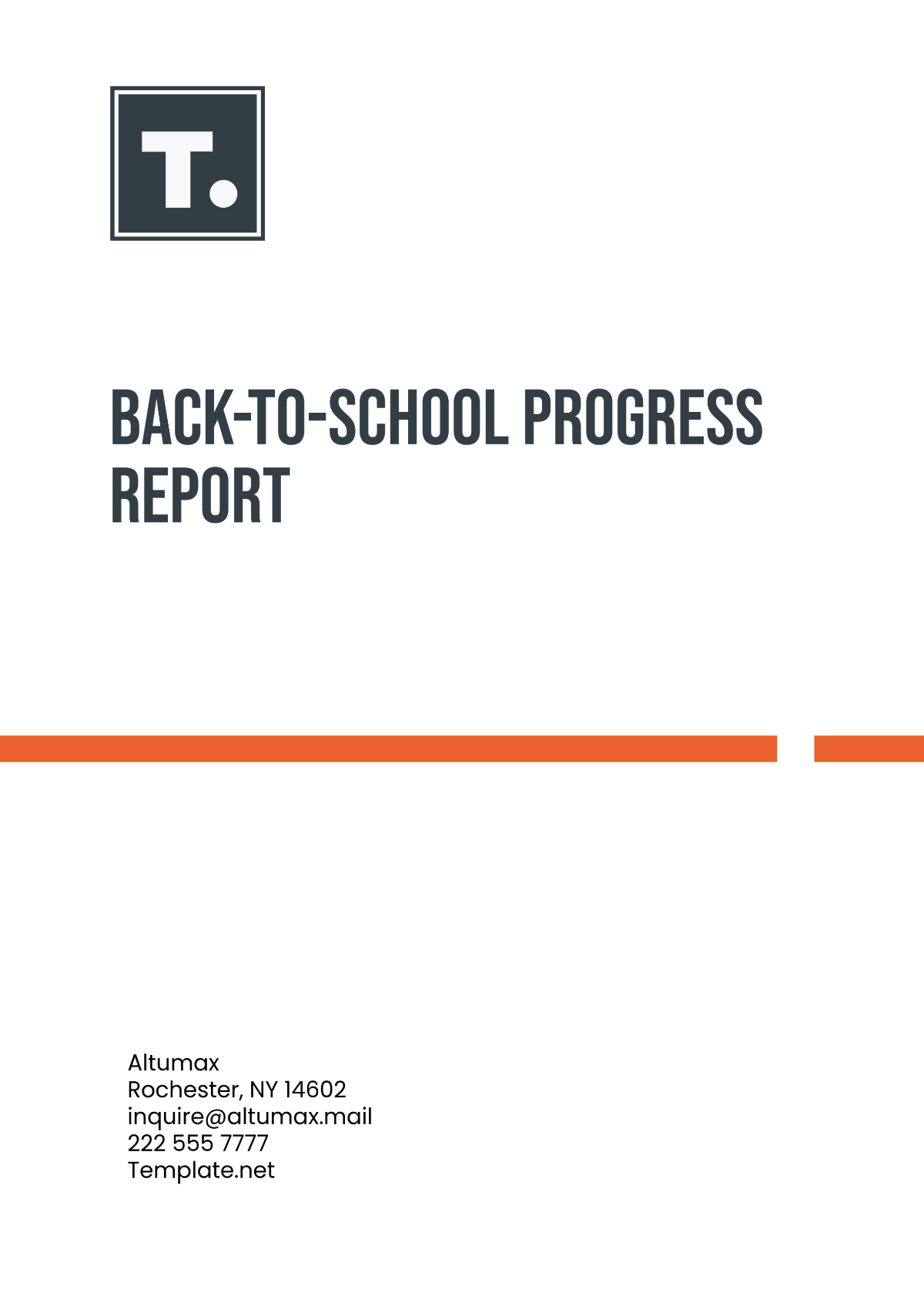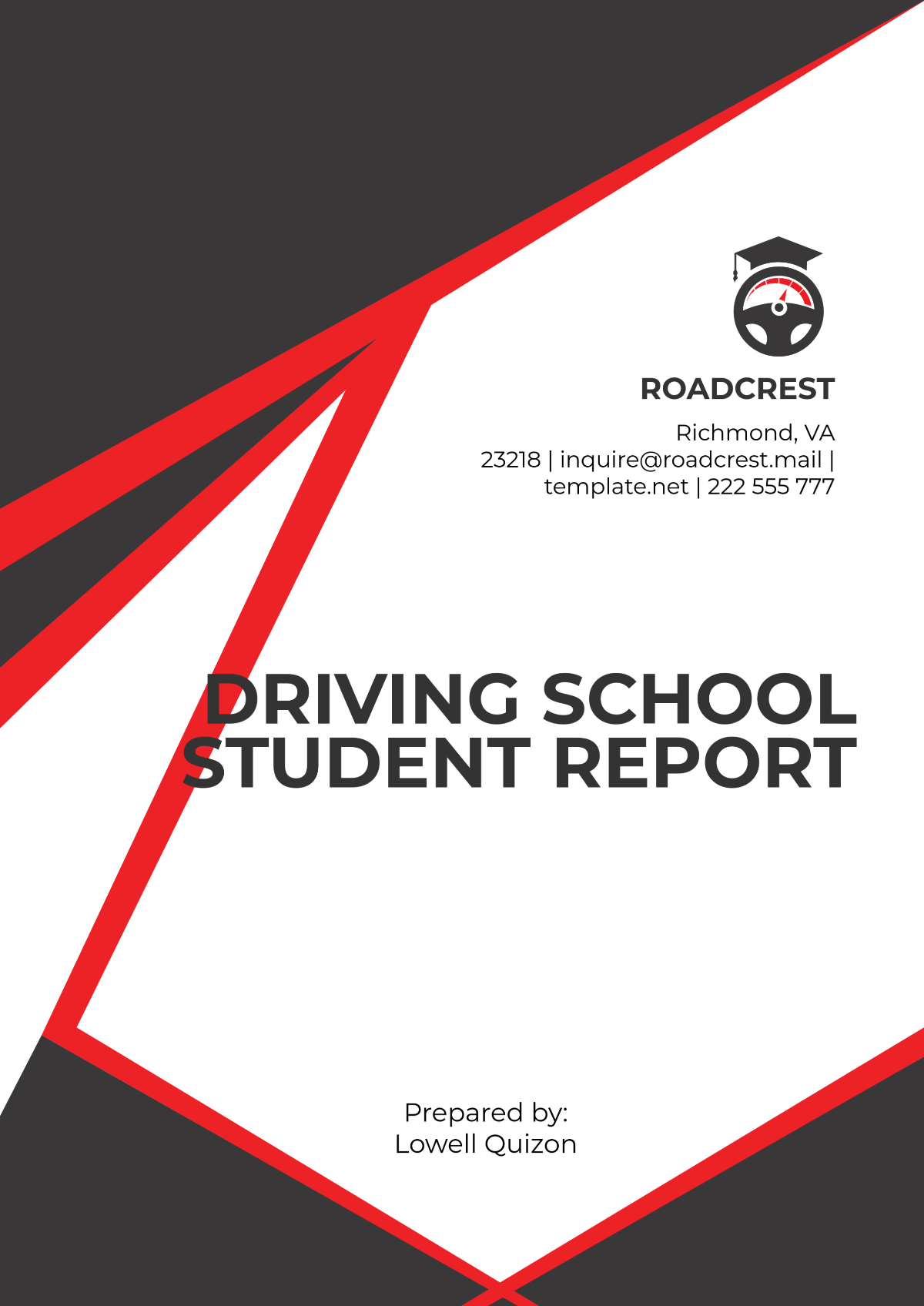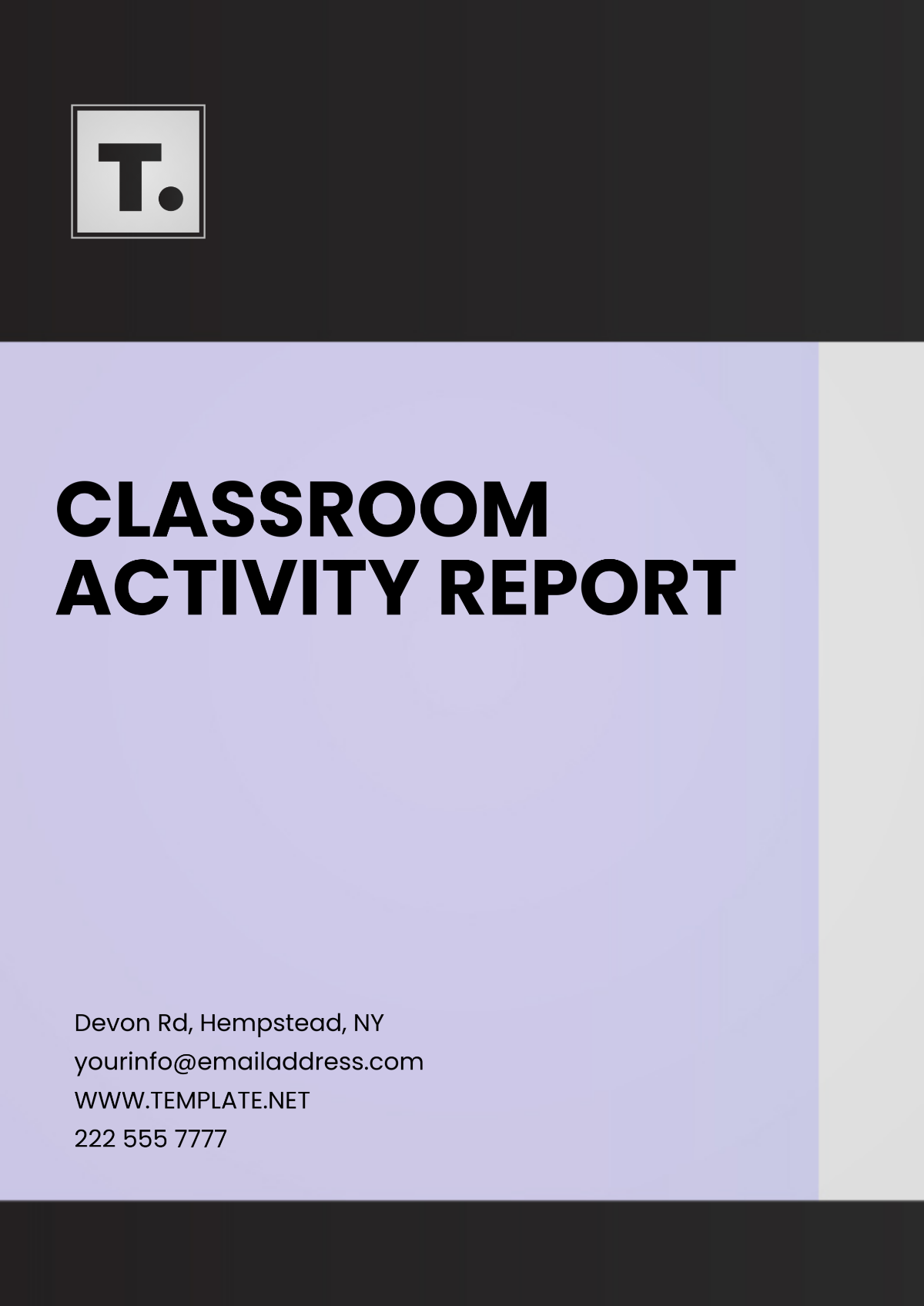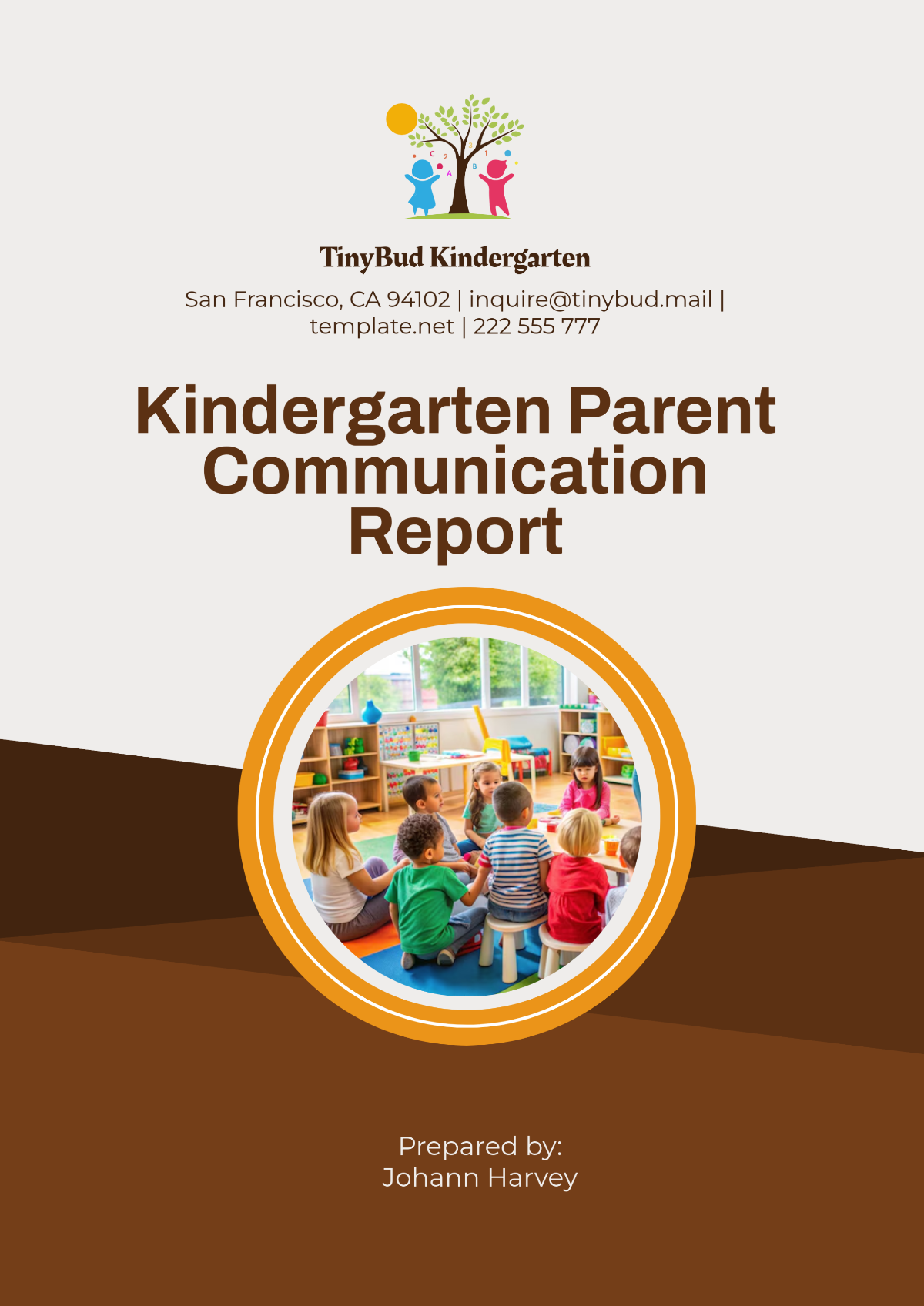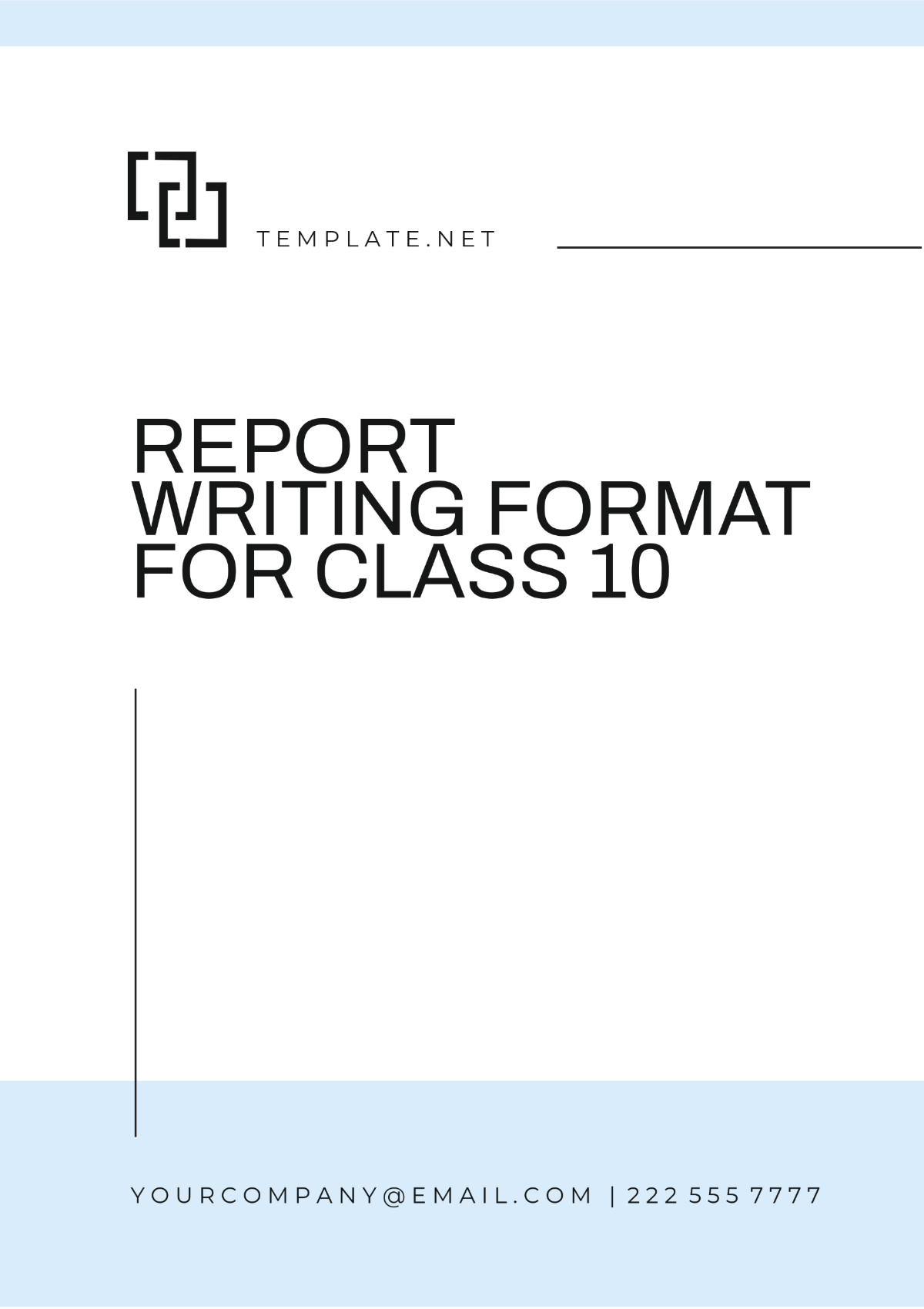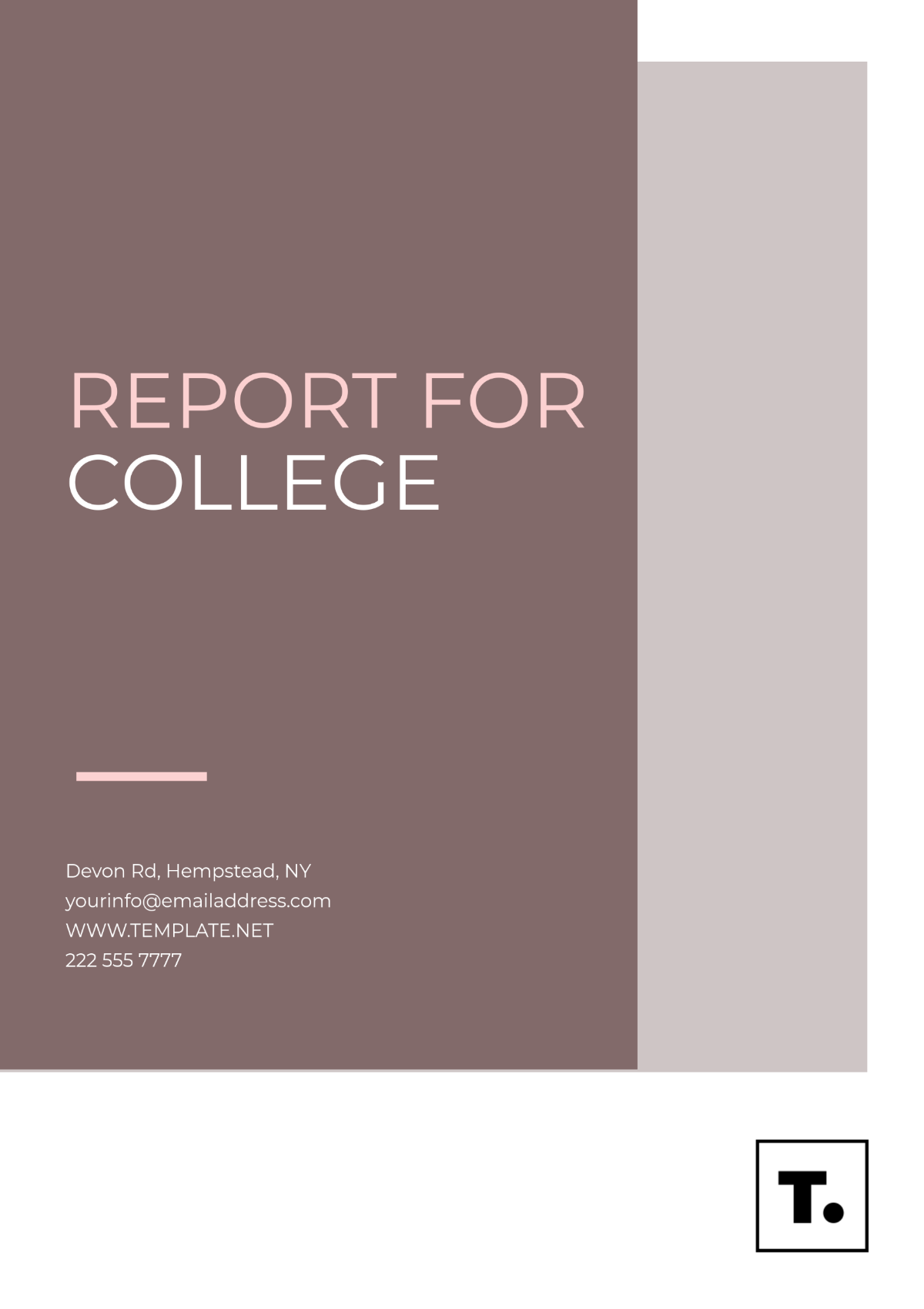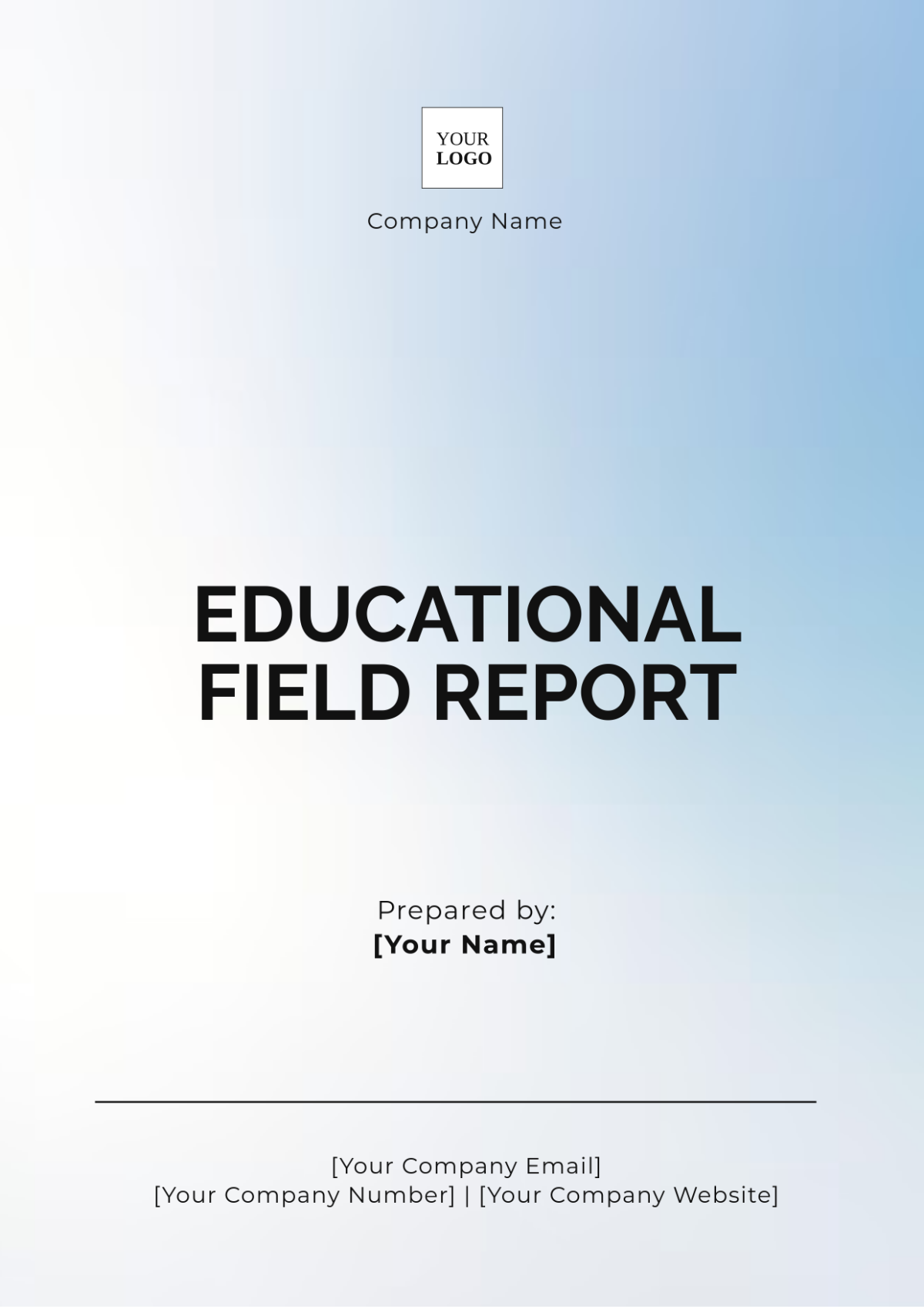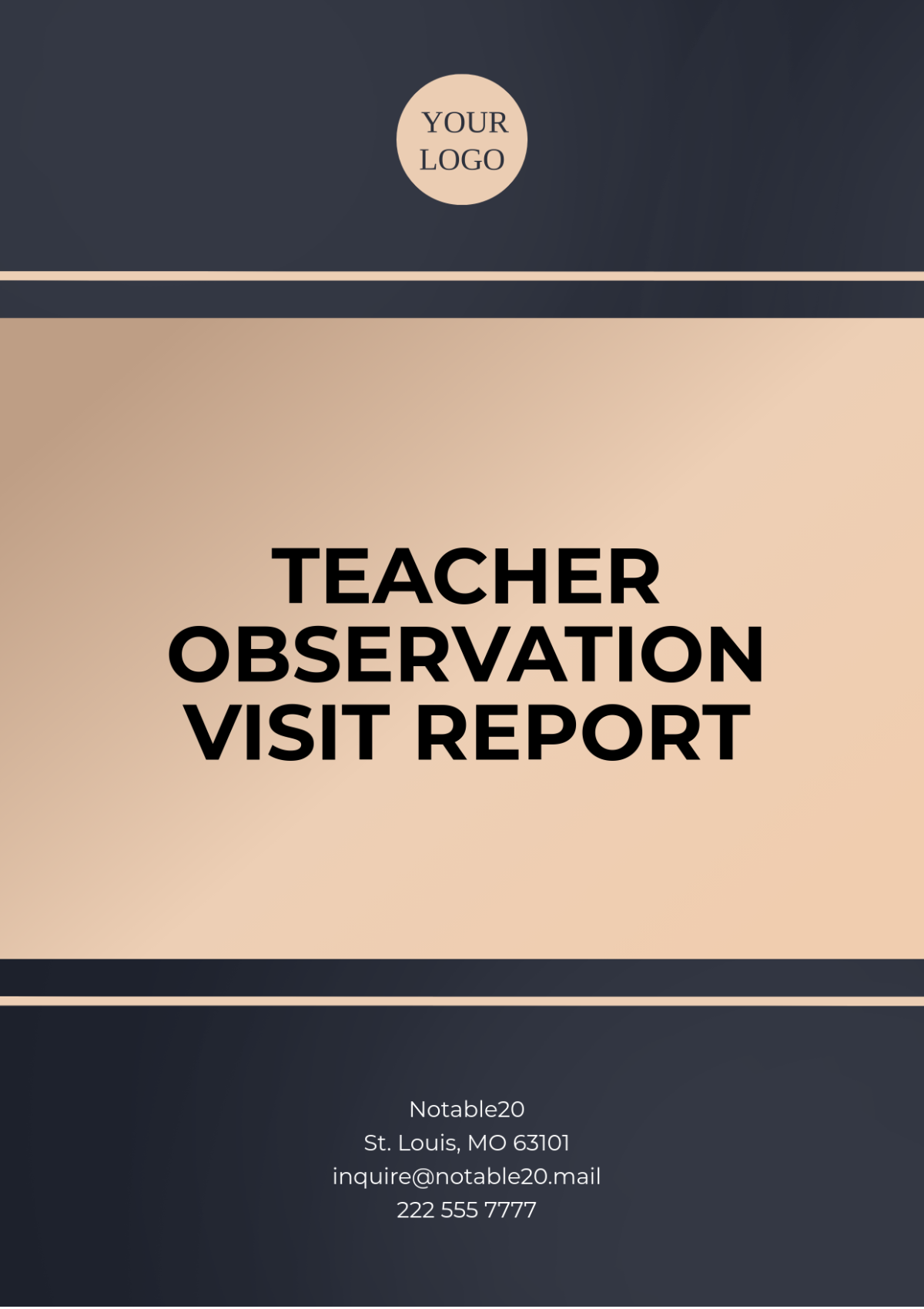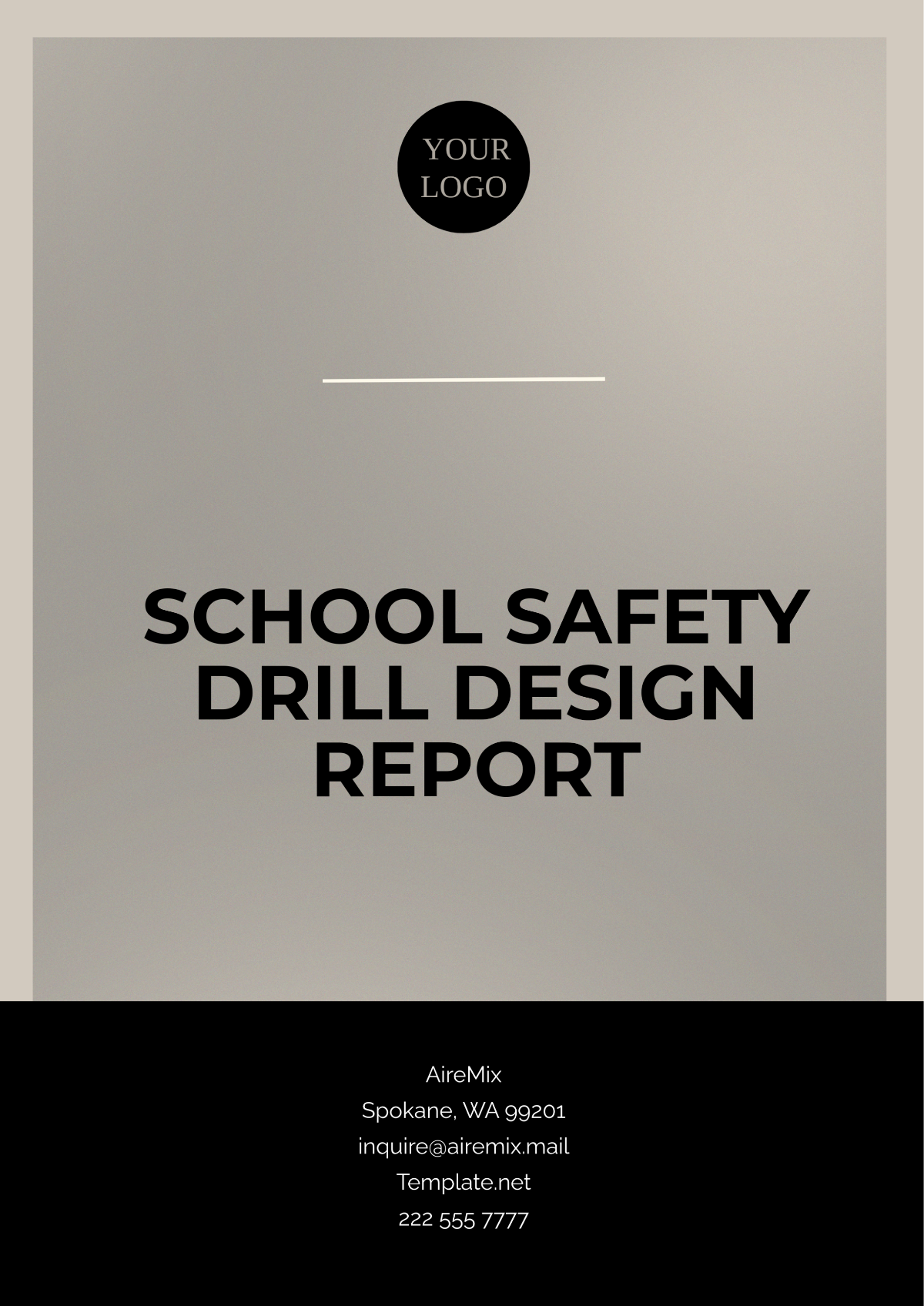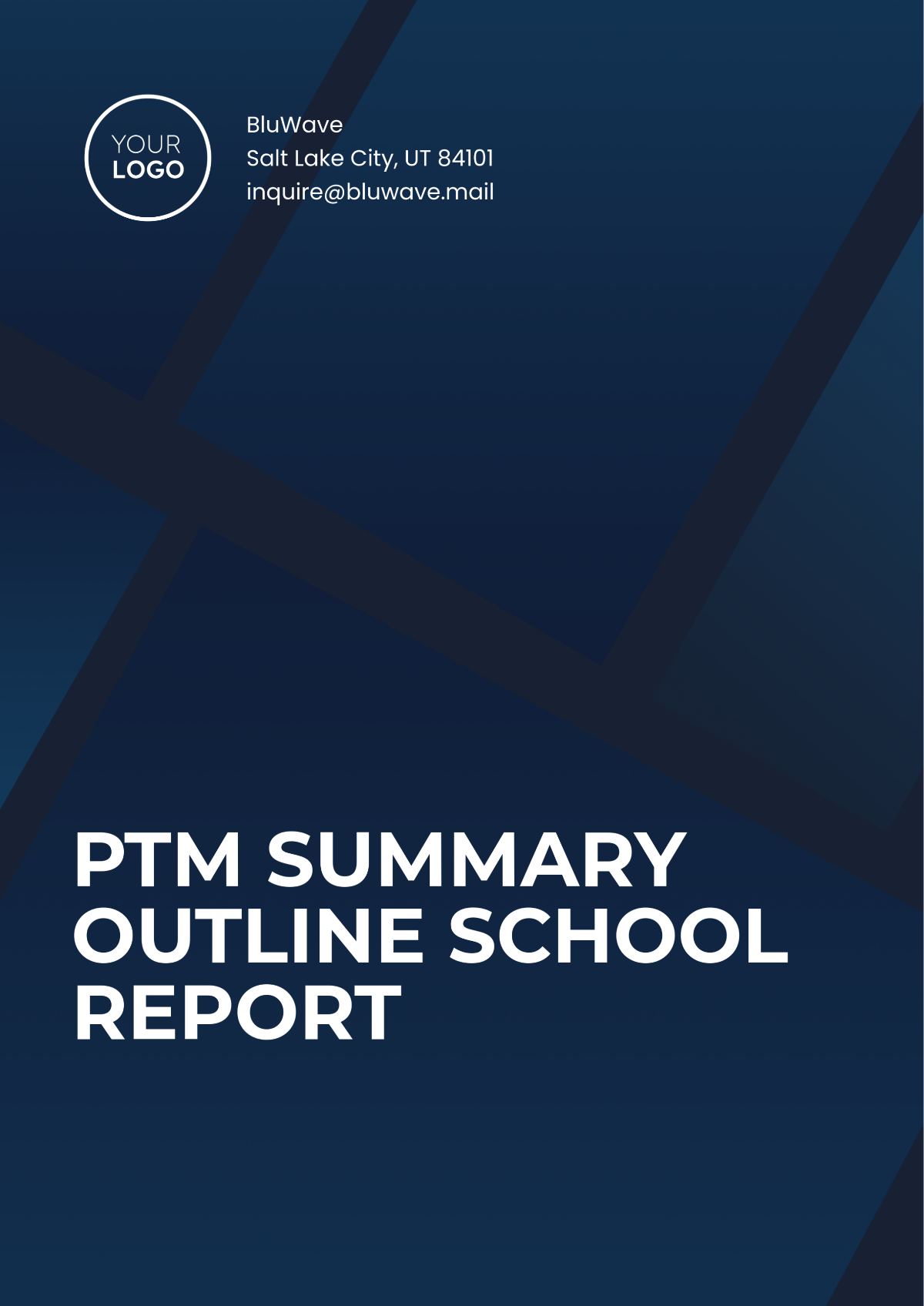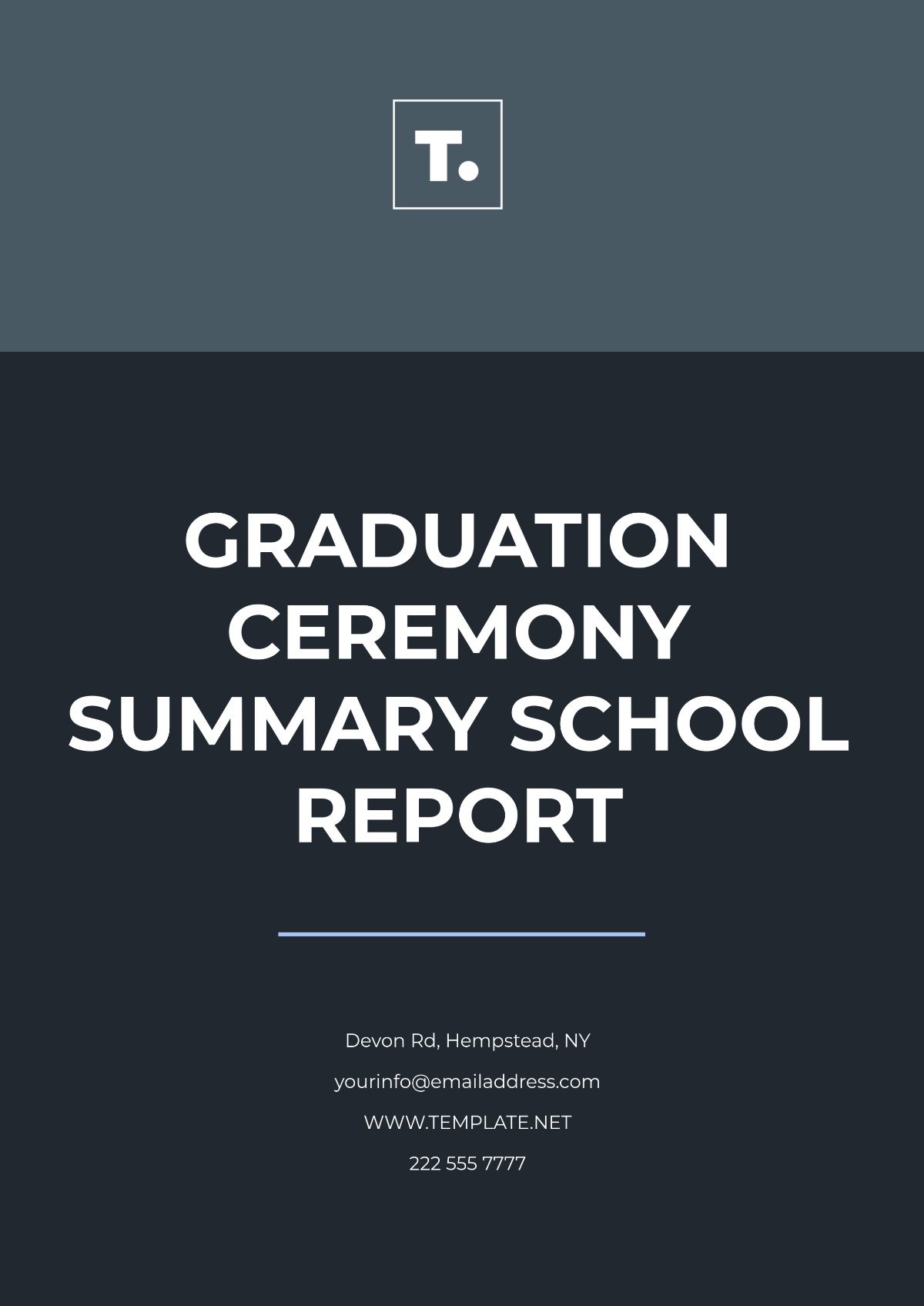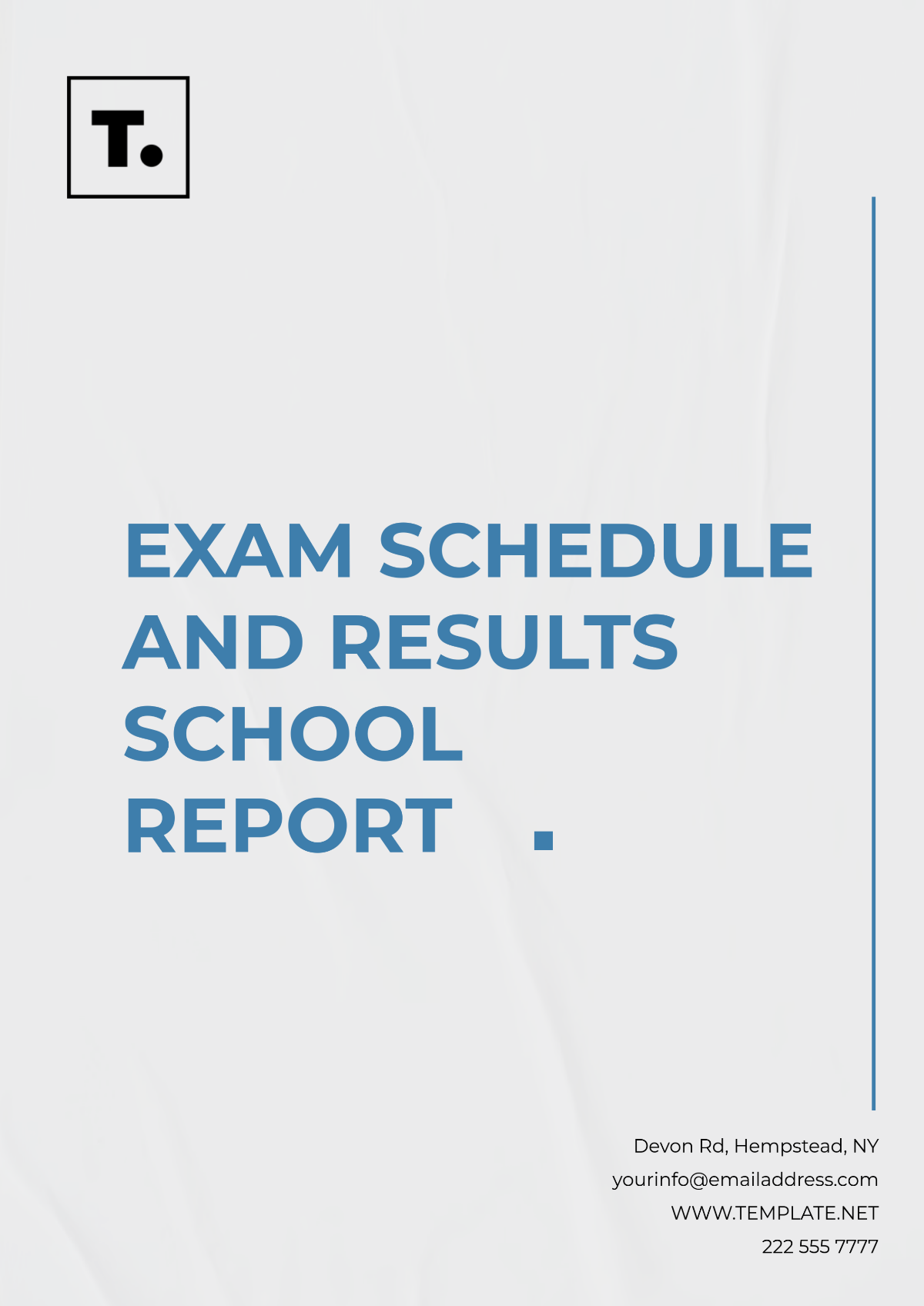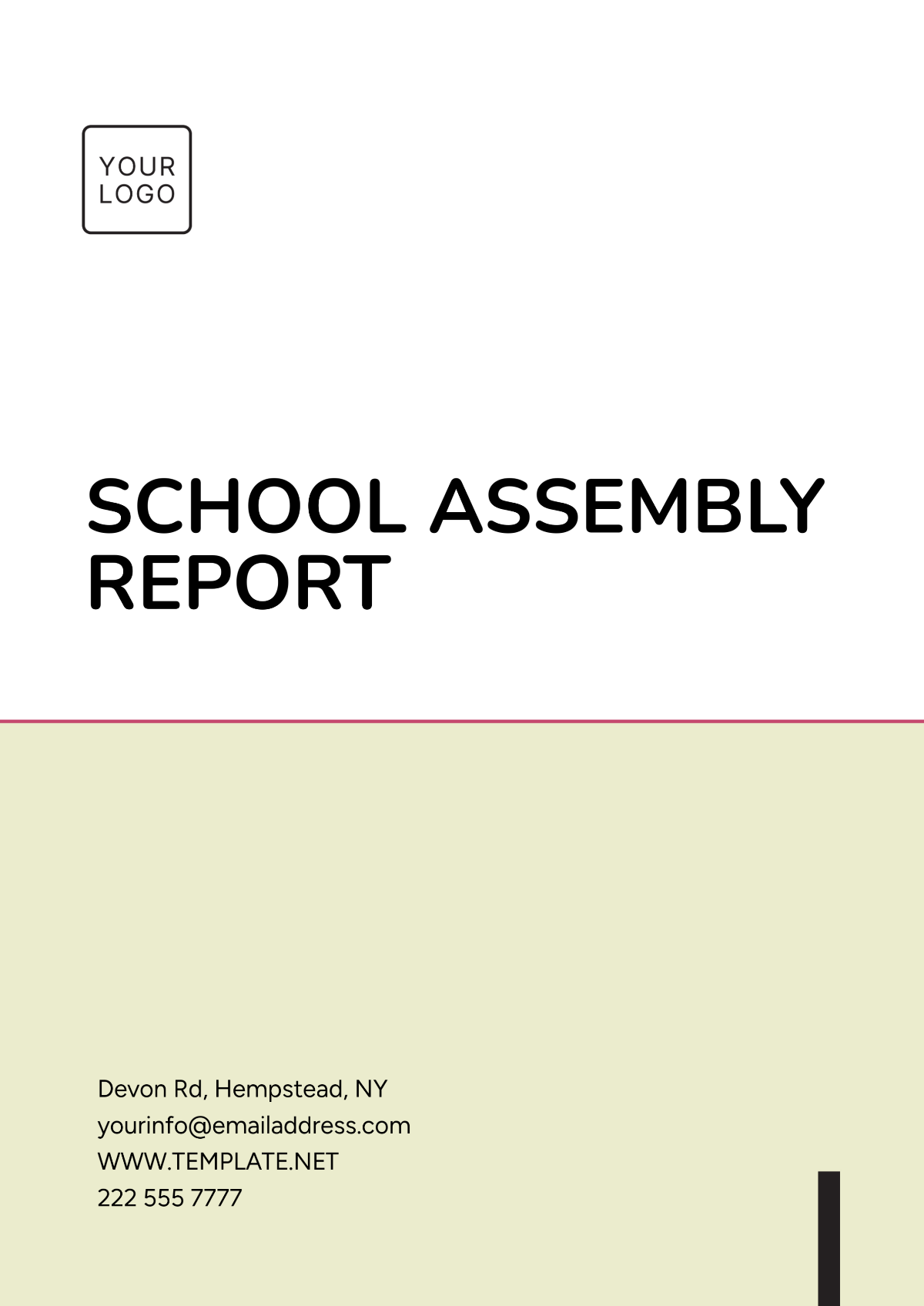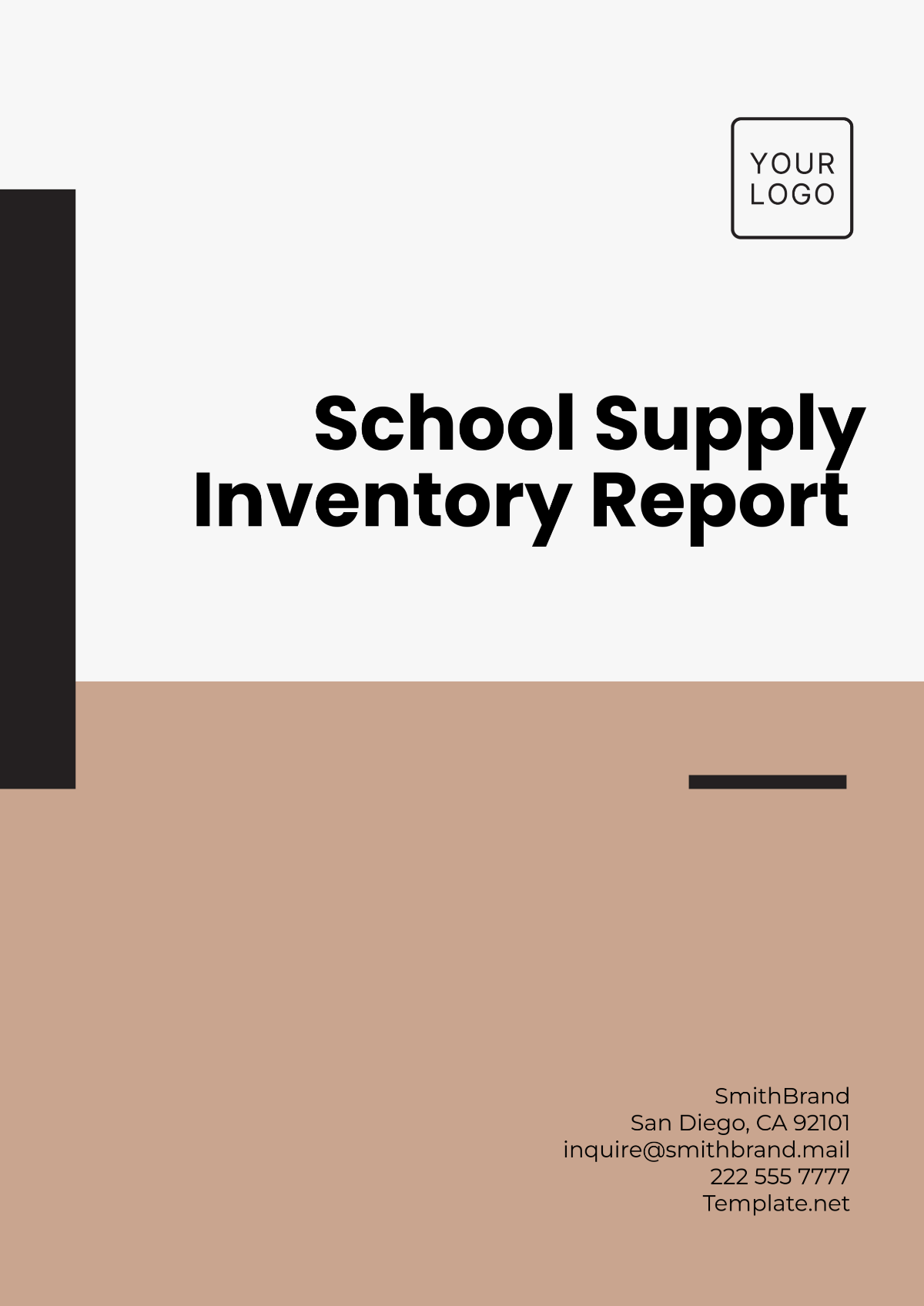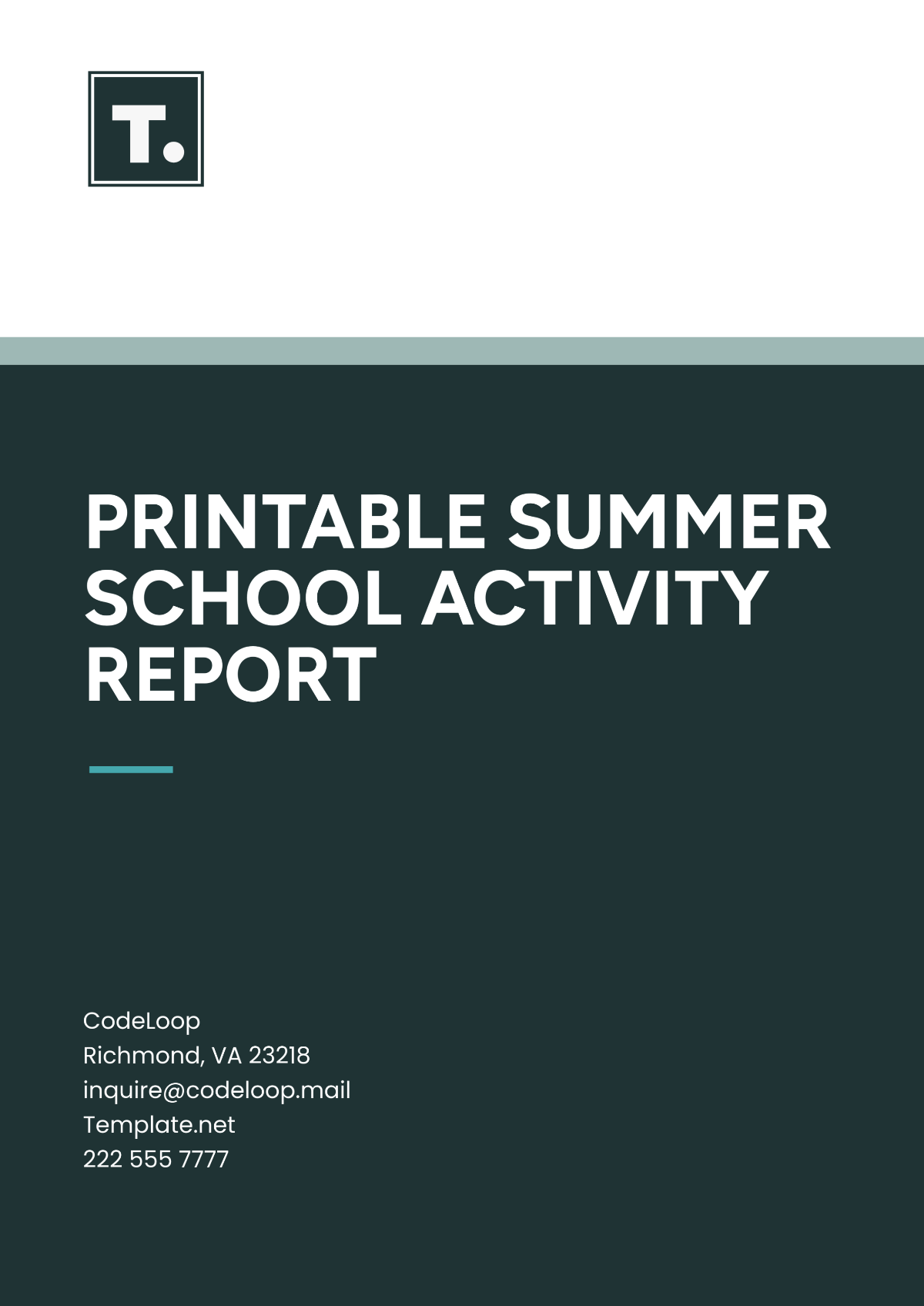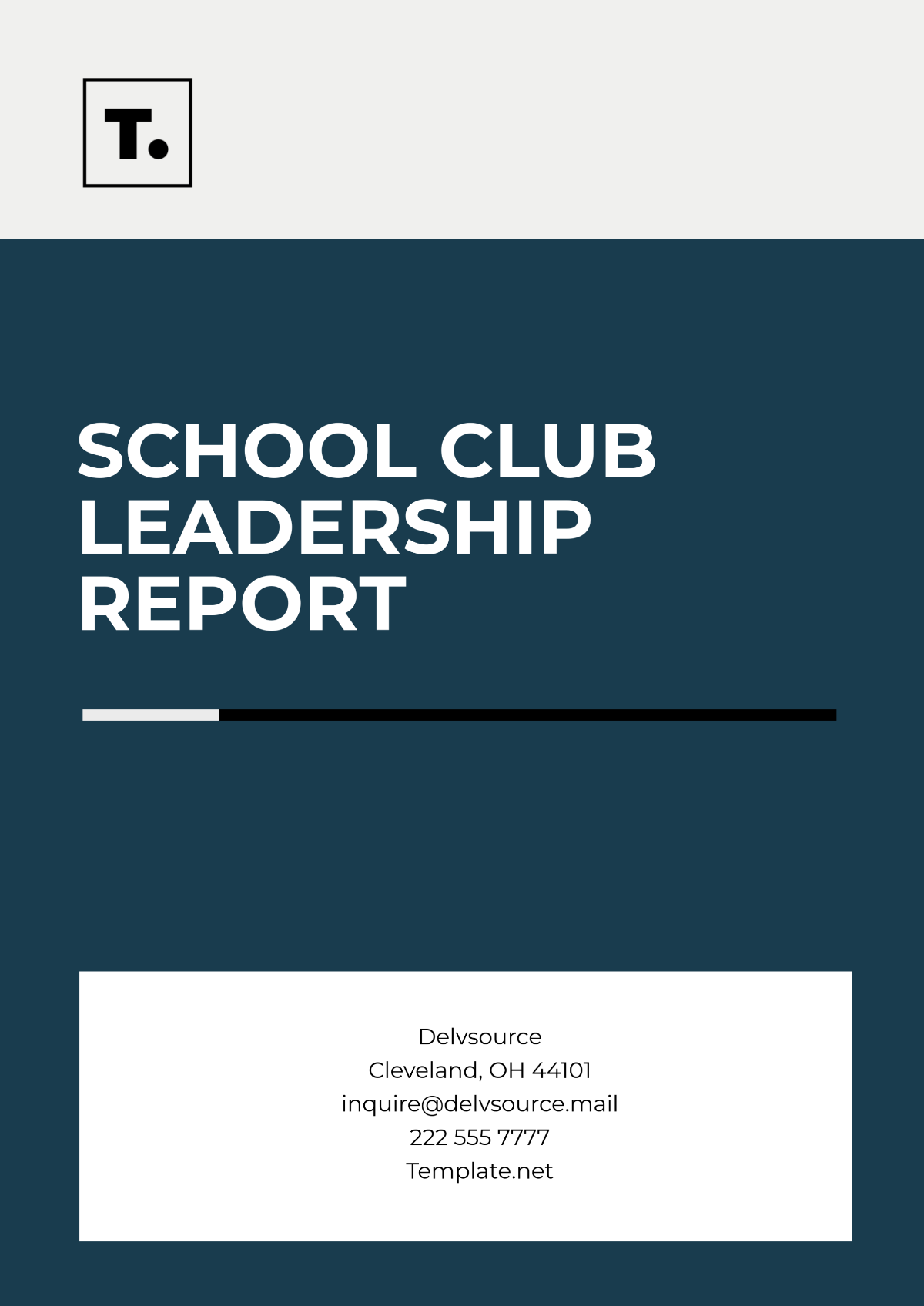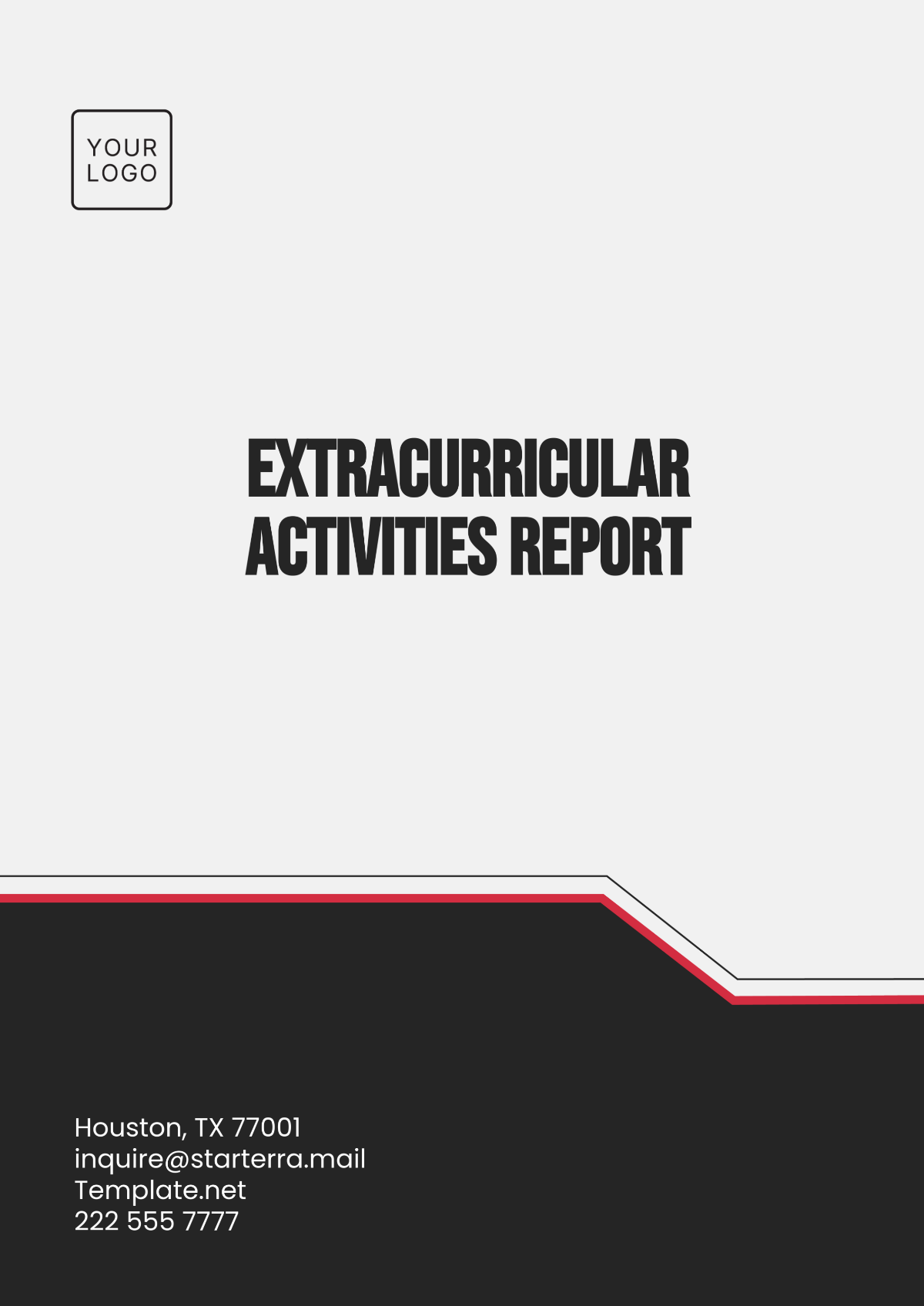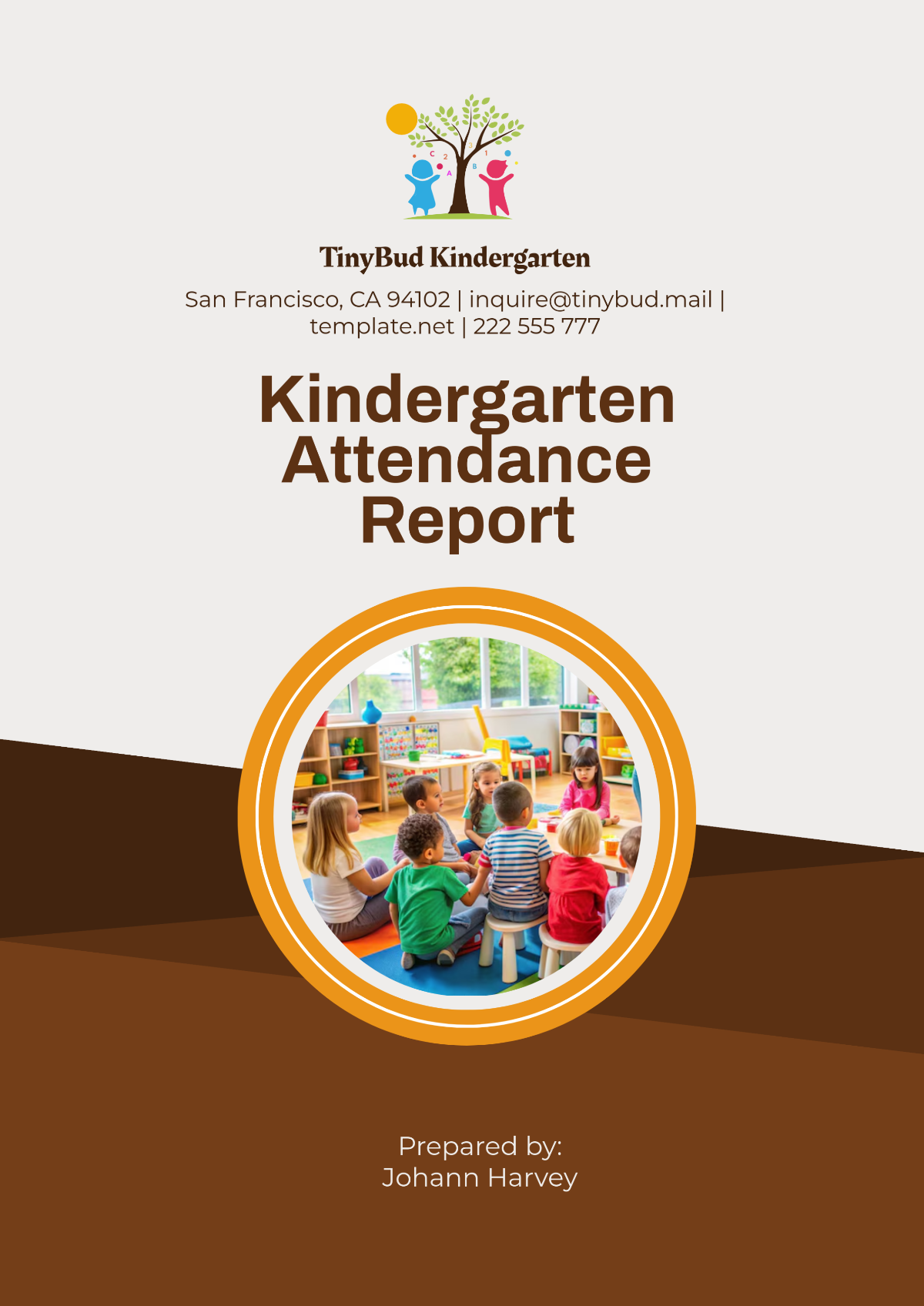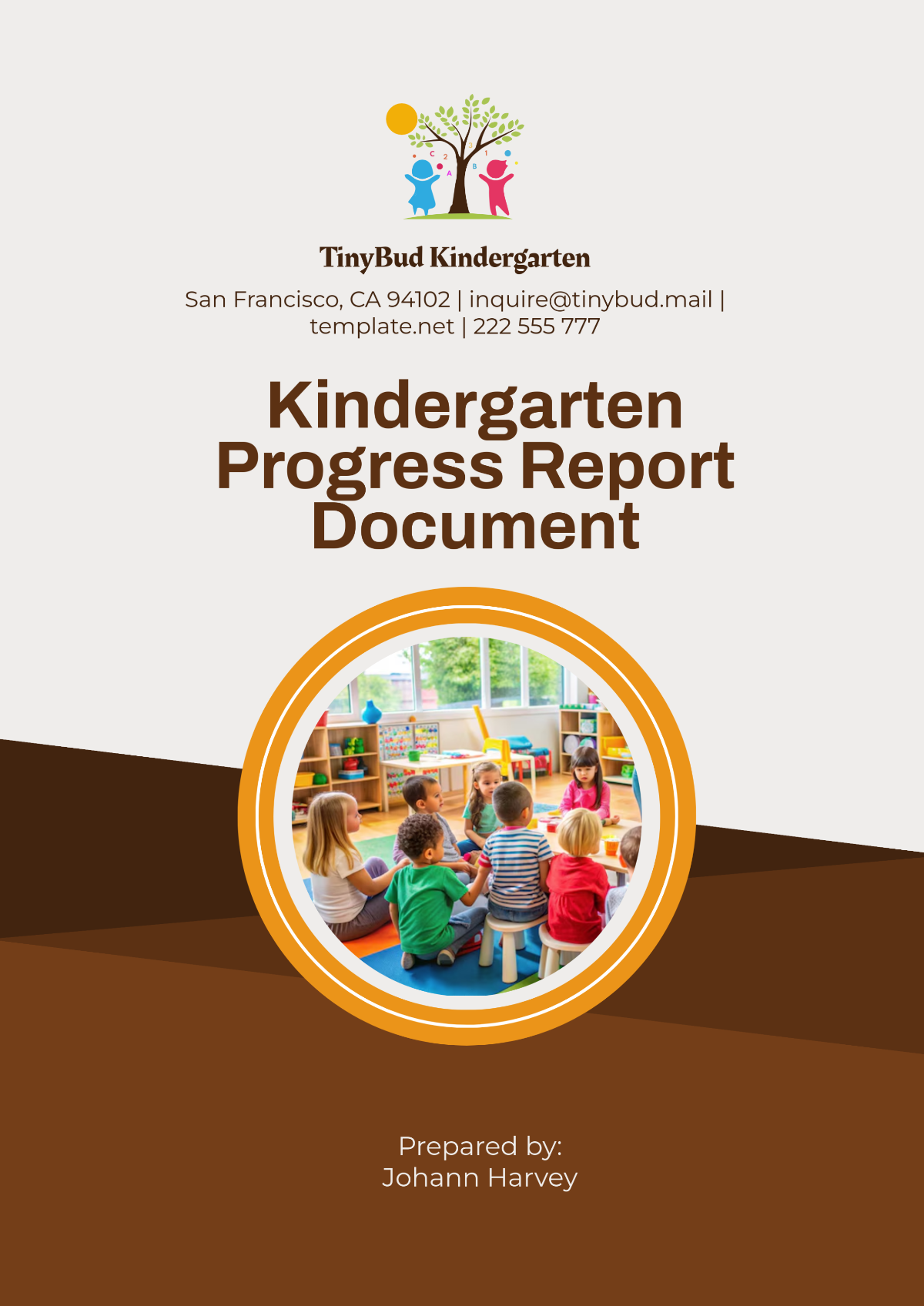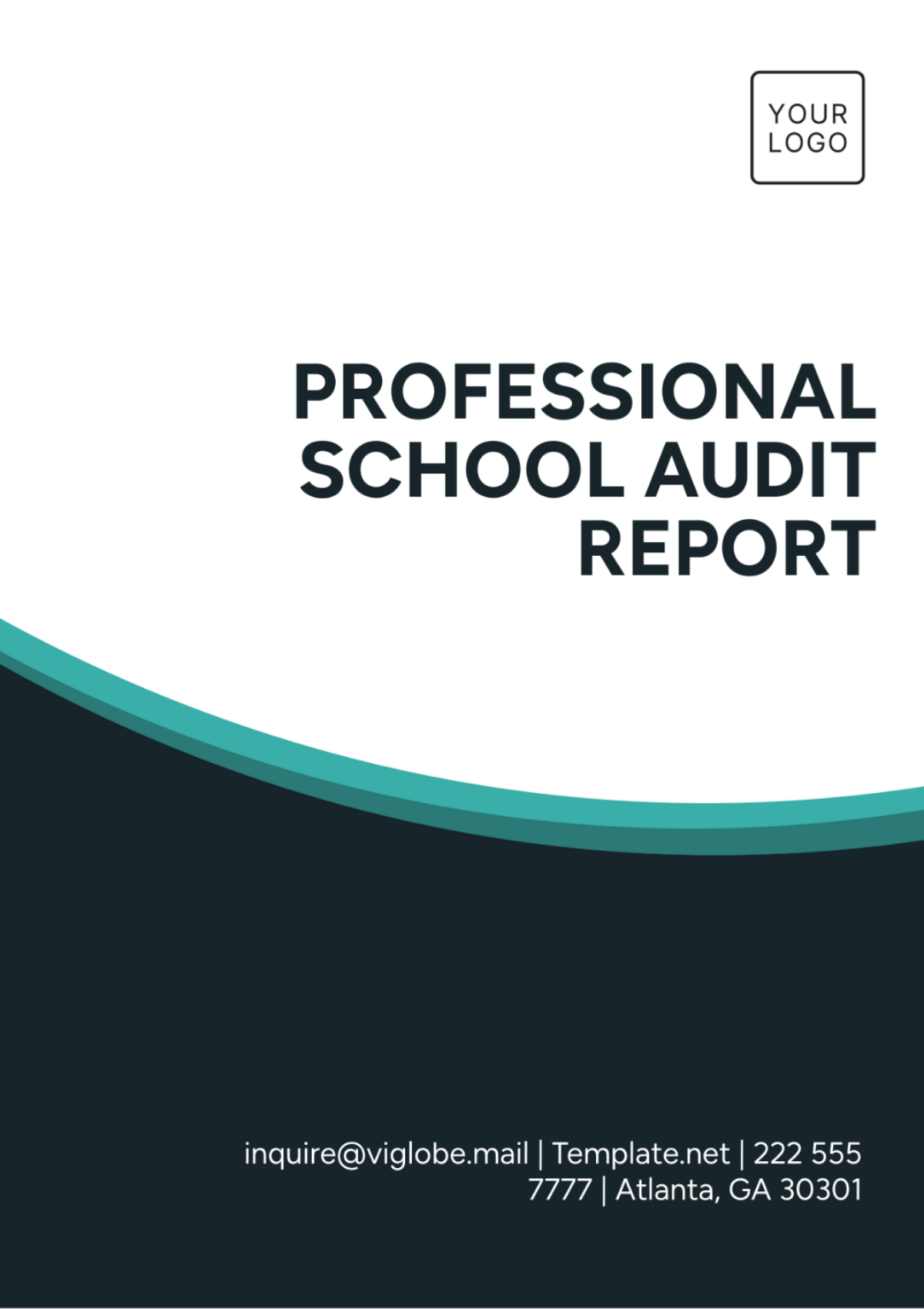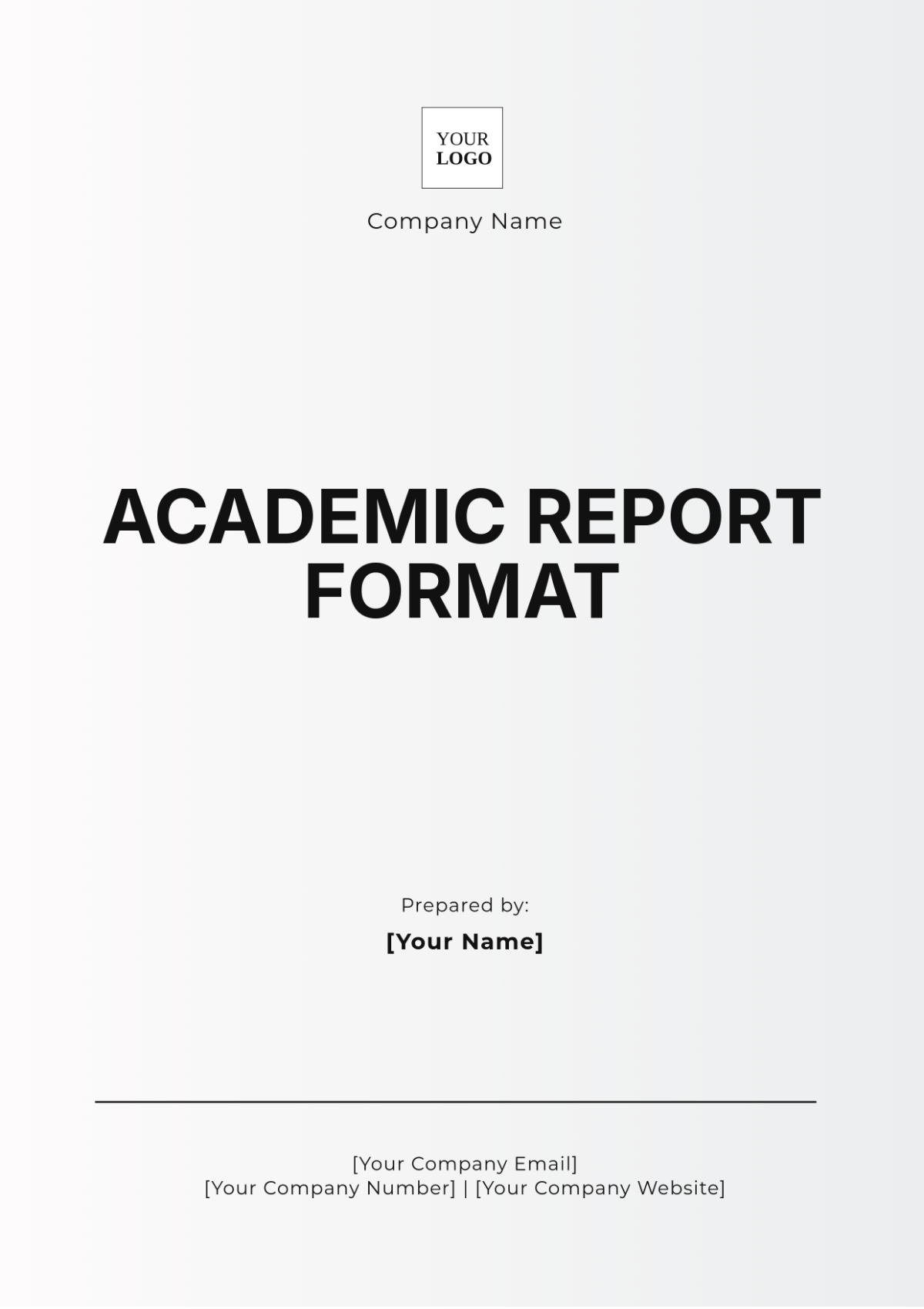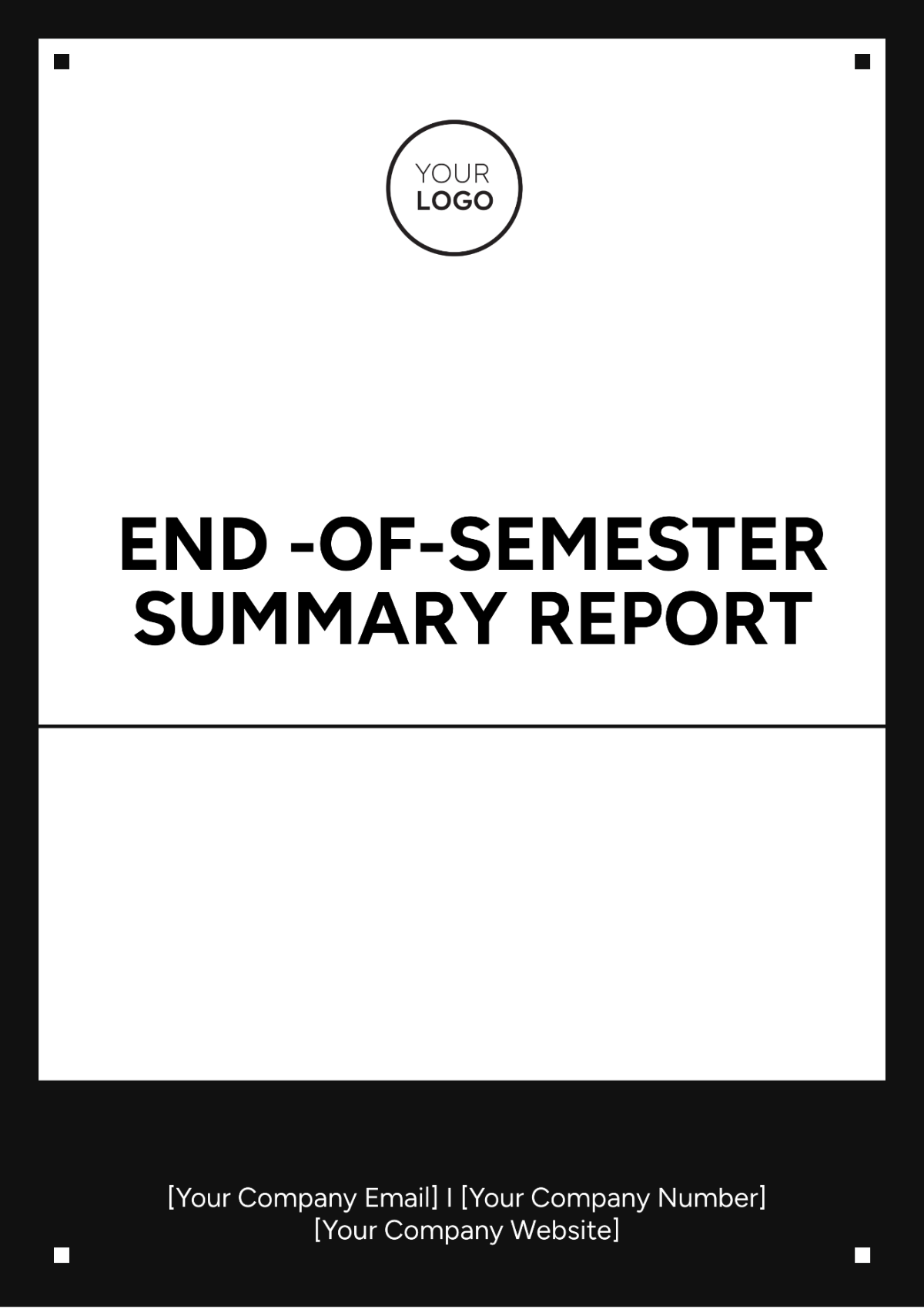School Student Performance Report
I. Introduction
The purpose of this report is to provide a comprehensive overview of the performance of Grade 5 students at [Your Company Name] for the school year 2056-2057. This report includes an analysis of attendance, academic performance, extra-curricular activities, and other relevant areas of student development.
A. Objectives
Provide Insightful Analysis: Offer a detailed analysis of student performance across various metrics, including academic achievement and extracurricular involvement.
Identify Strengths and Weaknesses: Highlight areas where students excel and areas needing improvement to inform future educational strategies and support.
Promote Holistic Development: Emphasize the importance of a balanced approach to education that includes academic, social, and personal development.
B. Scope
Grade 5 Students: This report focuses exclusively on the performance of Grade 5 students.
Multiple Performance Metrics: The report covers attendance, academics, extra-curricular activities, and other areas relevant to student growth and development.
Data Analysis and Interpretation: Detailed analysis and interpretation of collected data to provide actionable insights.
II. Attendance
The following table summarizes the attendance records of Grade 5 students for the school year 2056-2057:
Student Name | Days Present | Days Absent | Attendance |
|---|---|---|---|
Adams, John | 180 | 5 | 97.3% |
Baker, Emma | 175 | 10 | 94.6% |
Carter, Olivia | 178 | 7 | 96.2% |
Davis, Michael | 182 | 3 | 98.4% |
Evans, Sophia | 177 | 8 | 95.7% |
Foster, Liam | 176 | 9 | 95.1% |
Garcia, Isabella | 181 | 4 | 97.8% |
Harris, James | 179 | 6 | 96.8% |
Johnson, Mia | 180 | 5 | 97.3% |
King, Lucas | 174 | 11 | 94.0% |
Lee, Abigail | 183 | 2 | 98.9% |
Miller, Ethan | 178 | 7 | 96.2% |
Nelson, Charlotte | 177 | 8 | 95.7% |
Robinson, Alexander | 180 | 5 | 97.3% |
Smith, Amelia | 182 | 3 | 98.4% |
A. Overall Attendance
Most students maintained a high level of attendance, with the majority exceeding 95%. This high attendance rate demonstrates a strong commitment to attending school regularly. Regular attendance is crucial as it ensures that students are consistently engaged in their learning and do not miss out on valuable instructional time.
B. High Performers
Students such as Lee, Abigail and Davis, Michael, who attended 183 and 182 days respectively, displayed exceptional commitment to their education. Their near-perfect attendance is commendable and likely contributes positively to their academic performance. These students set a positive example for their peers.
C. Areas for Improvement
A few students, such as King, Lucas and Baker, Emma, had slightly lower attendance rates, falling below 95%. Identifying the reasons behind their absences, such as health issues or personal circumstances, can help in developing strategies to improve their attendance. It's essential to address these issues early to prevent potential academic setbacks.
D. Attendance Impact
High attendance is often correlated with better academic performance and greater participation in school activities. Consistent attendance allows students to build upon their knowledge and skills continuously, leading to better educational outcomes. Encouraging regular attendance is vital for fostering academic success and personal development.
Regular attendance is crucial for academic success and overall student development. It ensures that students do not miss out on critical instructional time and can fully engage in classroom activities. Consistent attendance also fosters a sense of responsibility and discipline among students, preparing them for future academic and professional endeavors. Addressing attendance issues early on can help prevent potential academic setbacks. This involves working closely with students and parents to understand the causes of absenteeism and providing necessary support and interventions.
III. Academic Performance
The following table provides an overview of the academic performance of Grade 5 students across core subjects:
Student Name | Mathematics | English Language Arts | Science | Social Studies |
|---|---|---|---|---|
Adams, John | A | B+ | A- | B |
Baker, Emma | B+ | A | B+ | A- |
Carter, Olivia | A- | A- | A | B+ |
Davis, Michael | A+ | A | A | A |
Evans, Sophia | B | B+ | A- | B |
Foster, Liam | A- | A | B+ | A- |
Garcia, Isabella | B+ | A- | B | B+ |
Harris, James | A | B | A- | B+ |
Johnson, Mia | A- | A | A | A- |
King, Lucas | B | B | B+ | B |
Lee, Abigail | A+ | A | A+ | A |
Miller, Ethan | A- | A- | A | B+ |
Nelson, Charlotte | B+ | B+ | A- | B |
Robinson, Alexander | A | A- | A | B+ |
Smith, Amelia | A | A | A- | A |
A. Mathematics
High Achievers: Several students, including Davis, Michael and Lee, Abigail, excelled in Mathematics with A+ grades. Their strong performance highlights their proficiency in mathematical concepts and problem-solving skills.
Areas for Improvement: A few students, such as Evans, Sophia and King, Lucas, received B grades, indicating room for improvement. Targeted support and additional practice can help these students enhance their mathematical abilities.
Class Average: The overall performance in Mathematics was impressive, with most students achieving A or B grades. This suggests effective teaching strategies and a strong understanding of the subject among students.
B. English Language Arts
Strong Performers: Students like Baker, Emma and Davis, Michael demonstrated excellent skills in English Language Arts, achieving A grades. This reflects their ability to comprehend, analyze, and articulate ideas effectively.
Improvement Needed: Some students, such as Harris, James and King, Lucas, earned B grades, suggesting the need for further development in reading, writing, and language skills. Additional support in these areas can help improve their performance.
Class Proficiency: The overall performance in English Language Arts was strong, with most students achieving A or B+ grades. This indicates a good grasp of language arts skills among the majority of students.
C. Science
Top Performers: Students such as Davis, Michael and Lee, Abigail excelled in Science with A and A+ grades. Their strong performance indicates a deep understanding of scientific concepts and principles.
Room for Growth: A few students, including Garcia, Isabella and Foster, Liam, received B+ grades, suggesting areas for improvement. Providing additional resources and support can help these students enhance their scientific knowledge.
Overall Achievement: The class demonstrated strong performance in Science, with most students achieving A or B+ grades. This reflects effective teaching methods and a solid understanding of the subject matter.
D. Social Studies
High Achievers: Several students, including Davis, Michael and Smith, Amelia, excelled in Social Studies with A grades. Their performance reflects a strong grasp of historical, geographical, and social concepts.
Areas for Improvement: Some students, such as Adams, John and Evans, Sophia, received B grades, indicating the need for additional support in understanding social studies concepts. Providing targeted resources can help improve their performance.
Class Performance: The overall performance in Social Studies was commendable, with most students achieving A or B+ grades. This suggests a good understanding of the subject among the majority of students.
Academic performance is a key indicator of student success and development. Providing targeted support and resources can help students improve their skills and achieve their full potential.
IV. Extra-Curricular Activities
The following table provides an overview of the participation of Grade 5 students in extra-curricular activities:
Student Name | Sports Team | Music Club | Art/Science Club |
|---|---|---|---|
Adams, John | Basketball | Choir | |
Baker, Emma | Soccer | Art Club | |
Carter, Olivia | Choir | Art Club and Science Club | |
Davis, Michael | Basketball | Science Club | |
Evans, Sophia | |||
Foster, Liam | Soccer | Band | |
Garcia, Isabella | Art Club | ||
Harris, James | Basketball | Band | Science Club |
Johnson, Mia | Soccer | Choir | Science Club |
King, Lucas | Art Club and Science Club | ||
Lee, Abigail | Basketball | ||
Miller, Ethan | Soccer | Band | |
Nelson, Charlotte | Choir | Art Club and Science Club | |
Robinson, Alexander | Basketball | Art Club and Science Club | |
Smith, Amelia | Soccer | Choir | Science Club |
A. Sports Team Participation
Active Participation: Many students, including Adams, John and Davis, Michael, participated in sports teams such as basketball and soccer. Their involvement in sports demonstrates a commitment to physical fitness and teamwork.
Benefits of Sports: Participation in sports helps students develop physical skills, maintain fitness, and build character. It also promotes teamwork, leadership, and discipline.
Encouraging More Participation: Efforts should be made to encourage more students to join sports teams. Providing additional opportunities and resources can help increase participation rates.
Impact on Academic Performance: Students who participate in sports often perform better academically. The skills learned in sports, such as time management and discipline, can positively influence their academic success.
B. Music Club Participation
Musically Inclined Students: Several students, including Foster, Liam and Harris, James, joined music clubs such as choir and band. This participation highlights their interest and talent in music.
Importance of Music Education: Music education enhances cognitive abilities, improves memory, and fosters creativity. It also provides students with a sense of accomplishment and boosts their confidence.
Developing Musical Skills: Participation in music clubs helps students develop their musical skills, including playing instruments and singing. It also encourages collaboration and teamwork.
Expanding Music Programs: To support more students in exploring their musical talents, expanding music programs and offering diverse musical opportunities can be beneficial.
C. Art Club Participation
Artistic Engagement: Several students, including Baker, Emma and Carter, Olivia, participated in the Art Club. Their involvement indicates a strong interest in visual arts and creativity.
Benefits of Art Education: Art education promotes creativity, critical thinking, and problem-solving skills. It allows students to express themselves and explore different perspectives.
Enhancing Artistic Skills: Participation in art clubs helps students enhance their artistic skills, including drawing, painting, and sculpting. It also encourages them to appreciate and critique art.
Supporting Artistic Development: Providing additional resources and opportunities for art education can support students' artistic development and encourage more students to explore their creativity.
D. Science Club Participation
Interest in Science: Many students, including Carter, Olivia and Harris, James, participated in the Science Club. This indicates a strong interest in scientific exploration and discovery.
Importance of Science Clubs: Science clubs provide students with opportunities to conduct experiments, explore scientific concepts, and develop critical thinking skills. They also foster a love for learning and curiosity.
Encouraging Scientific Inquiry: Participation in science clubs encourages students to ask questions, conduct research, and engage in hands-on learning. It helps them develop a deeper understanding of scientific principles.
Expanding Scientific Opportunities: To support students' interest in science, expanding science club activities and providing additional resources can be beneficial. This can help students further explore their scientific interests.
Involvement in extra-curricular activities is crucial for holistic student development. It helps students develop various skills, including teamwork, leadership, creativity, and critical thinking. Encouraging more students to participate in these activities can enhance their overall educational experience and personal growth.
V. Behavioral and Social Development
The following table provides an overview of the behavioral and social development of Grade 5 students, based on teacher observations and peer feedback:
Student Name | Behavior Rating | Peer Interaction | Leadership Skills | Conflict Resolution |
|---|---|---|---|---|
Adams, John | Excellent | Very Good | Good | Very Good |
Baker, Emma | Very Good | Good | Very Good | Good |
Carter, Olivia | Excellent | Excellent | Excellent | Excellent |
Davis, Michael | Excellent | Very Good | Very Good | Very Good |
Evans, Sophia | Good | Good | Good | Good |
Foster, Liam | Very Good | Excellent | Good | Excellent |
Garcia, Isabella | Good | Very Good | Good | Good |
Harris, James | Excellent | Very Good | Very Good | Excellent |
Johnson, Mia | Very Good | Excellent | Good | Very Good |
King, Lucas | Good | Good | Good | Good |
Lee, Abigail | Excellent | Excellent | Excellent | Very Good |
Miller, Ethan | Very Good | Very Good | Good | Very Good |
Nelson, Charlotte | Good | Very Good | Good | Good |
Robinson, Alexander | Excellent | Excellent | Very Good | Very Good |
Smith, Amelia | Very Good | Excellent | Good | Excellent |
A. Behavior Rating
Outstanding Behavior: Students such as Adams, John and Carter, Olivia, received excellent behavior ratings, reflecting their exemplary conduct in and out of the classroom. These students consistently demonstrate respect, responsibility, and positive attitudes.
Areas for Improvement: Some students, like Evans, Sophia and King, Lucas, received good ratings, indicating there is room for improvement in their behavior. Providing guidance and support can help these students enhance their conduct.
Classroom Environment: Overall, the behavior ratings indicate a positive classroom environment where most students exhibit good or excellent behavior. This contributes to a conducive learning atmosphere.
Impact on Learning: Good behavior is essential for effective learning. It helps maintain order and discipline, allowing students to focus on their studies and participate actively in classroom activities.
B. Peer Interaction
Strong Peer Relationships: Many students, including Carter, Olivia and Johnson, Mia, received excellent ratings for peer interaction. These students are adept at building positive relationships with their classmates and fostering a collaborative environment.
Improvement Needed: A few students, such as Baker, Emma and Garcia, Isabella, received good ratings, suggesting the need for improvement in their interactions with peers. Encouraging positive social behaviors and teamwork can help enhance their peer relationships.
Social Skills Development: The overall peer interaction ratings reflect strong social skills among the majority of students. This indicates that students are capable of working well with others and contributing to a positive classroom culture.
Importance of Peer Interaction: Positive peer interaction is crucial for social development. It helps students build friendships, develop empathy, and learn to work collaboratively. Fostering a supportive and inclusive classroom environment is essential for promoting positive peer relationships.
C. Leadership Skills
Emerging Leaders: Students like Carter, Olivia and Lee, Abigail, demonstrated excellent leadership skills. Their ability to lead and inspire others is commendable and sets a positive example for their peers.
Developing Leaders: Some students, such as Adams, John and Harris, James, received very good ratings, indicating strong leadership potential. Providing opportunities for these students to take on leadership roles can help further develop their skills.
Class Leadership Dynamics: The overall leadership ratings suggest that many students possess leadership qualities. Encouraging students to take initiative and lead projects or activities can foster their leadership development.
Significance of Leadership Skills: Developing leadership skills is crucial for students' personal and academic growth. It helps them build confidence, take responsibility, and positively influence others. Providing leadership opportunities can enhance these skills and prepare students for future leadership roles.
D. Conflict Resolution
Effective Conflict Resolution: Students such as Carter, Olivia and Foster, Liam, received excellent ratings for conflict resolution, indicating their ability to handle conflicts constructively. These students are skilled at resolving disagreements and maintaining harmony.
Improvement Areas: Some students, like Adams, John and Garcia, Isabella, received good ratings, suggesting the need for improvement in their conflict resolution skills. Teaching effective communication and problem-solving techniques can help enhance these skills.
Overall Competence: The majority of students received very good or excellent ratings, reflecting their competence in resolving conflicts. This indicates a positive classroom environment where students are capable of handling conflicts amicably.
Importance of Conflict Resolution: Effective conflict resolution skills are essential for maintaining positive relationships and a peaceful classroom environment. It helps students manage disagreements, develop empathy, and work collaboratively. Encouraging these skills can contribute to a supportive and respectful learning community.
Behavioral and social development are key aspects of student growth. Encouraging positive behavior, strong peer relationships, leadership skills, and effective conflict resolution contributes to a holistic educational experience.
VI. Teacher Feedback
The following table provides an overview of teacher feedback for each Grade 5 student, highlighting their strengths and areas for improvement:
Student Name | Strengths | Areas for Improvement |
|---|---|---|
Adams, John | Strong analytical skills, leadership | Needs to improve participation in class |
Baker, Emma | Creative thinker, teamwork | Needs to focus more on assignments |
Carter, Olivia | Excellent communication, leadership | Can be more organized |
Davis, Michael | Highly motivated, strong academics | Needs to work on time management |
Evans, Sophia | Good behavior, respectful | Needs to participate more in activities |
Foster, Liam | Enthusiastic, good in sports | Needs to improve attention to detail |
Garcia, Isabella | Creative, good peer relationships | Needs to focus more on studies |
Harris, James | Strong in science, leadership | Needs to improve handwriting |
Johnson, Mia | Good communication, teamwork | Can be more assertive |
King, Lucas | Good in arts, cooperative | Needs to improve punctuality |
Lee, Abigail | Excellent academics, leadership | Needs to work on group collaboration |
Miller, Ethan | Enthusiastic learner, good behavior | Needs to participate more in class |
Nelson, Charlotte | Good in science, respectful | Needs to improve time management |
Robinson, Alexander | Strong in math, leadership | Can be more organized |
Smith, Amelia | Excellent academics, respectful | Needs to improve participation in class |
A. Strengths
Analytical and Leadership Skills: Students like Adams, John and Carter, Olivia, are recognized for their strong analytical and leadership skills. These strengths contribute positively to their academic and personal development.
Creative Thinkers: Students such as Baker, Emma and Garcia, Isabella, are noted for their creativity. This quality enhances their problem-solving abilities and contributes to innovative thinking.
Communication Skills: Several students, including Carter, Olivia and Johnson, Mia, are praised for their excellent communication skills. Effective communication is crucial for academic success and building strong relationships.
Academic Excellence: Students like Davis, Michael and Lee, Abigail, are recognized for their outstanding academic performance. Their dedication to their studies sets a high standard for their peers.
B. Areas for Improvement
Class Participation: Students such as Adams, John and Miller, Ethan, need to improve their participation in class. Encouraging active participation can enhance their learning experience and engagement.
Organization Skills: Some students, like Carter, Olivia and Robinson, Alexander, need to work on their organizational skills. Developing these skills can help them manage their time and tasks more effectively.
Focus and Attention: Students such as Baker, Emma and Foster, Liam, need to improve their focus and attention to detail. Providing guidance and support can help them enhance these skills.
Assertiveness and Punctuality: Students like Johnson, Mia and King, Lucas, need to be more assertive and improve their punctuality. Encouraging these behaviors can contribute to their personal growth and responsibility.
Teacher feedback is crucial for identifying students' strengths and areas for improvement. It provides valuable insights that can help tailor educational strategies to support each student's development.
VII. Parental Feedback
The following table provides an overview of parental feedback for each Grade 5 student, highlighting their satisfaction with the school's educational approach and their child's progress:
Student Name | Parental Satisfaction | Comments |
|---|---|---|
Adams, John | High | Pleased with academic progress |
Baker, Emma | Medium | Appreciates creativity development |
Carter, Olivia | High | Very happy with leadership skills |
Davis, Michael | High | Impressed with motivation |
Evans, Sophia | Medium | Satisfied with behavior improvement |
Foster, Liam | High | Happy with sports involvement |
Garcia, Isabella | Medium | Sees improvement in social skills |
Harris, James | High | Very pleased with science progress |
Johnson, Mia | High | Happy with communication skills |
King, Lucas | Medium | Appreciates art development |
Lee, Abigail | High | Very impressed with academics |
Miller, Ethan | Medium | Satisfied with enthusiasm |
Nelson, Charlotte | High | Happy with respectfulness |
Robinson, Alexander | High | Pleased with math skills |
Smith, Amelia | High | Very pleased with overall progress |
A. High Satisfaction
Academic Progress: Parents of students like Adams, John and Lee, Abigail, expressed high satisfaction with their child's academic progress. This reflects the school's effective teaching methods and supportive learning environment.
Leadership Skills: Parents of students such as Carter, Olivia and Harris, James, are pleased with the development of their child's leadership skills. This indicates the school's focus on fostering leadership qualities.
Motivation and Enthusiasm: Parents of students like Davis, Michael and Foster, Liam, are impressed with their child's motivation and enthusiasm for learning. This reflects a positive and engaging school environment.
Communication and Respect: Parents of students such as Johnson, Mia and Nelson, Charlotte, are happy with their child's communication skills and respectfulness. This highlights the school's emphasis on character development.
B. Medium Satisfaction
Creativity Development: Parents of students like Baker, Emma and King, Lucas, appreciate the school's focus on developing their child's creativity. This indicates the value placed on fostering artistic talents.
Social Skills Improvement: Parents of students such as Garcia, Isabella and Evans, Sophia, see improvement in their child's social skills. This reflects the school's efforts to support students' social development.
Behavior and Enthusiasm: Parents of students like Miller, Ethan and Foster, Liam, are satisfied with their child's behavior and enthusiasm. This indicates a positive school environment that encourages good conduct and active participation.
Parental feedback is essential for understanding parents' perspectives on their child's education. It helps identify areas where the school excels and areas needing improvement.
VIII. Recommendations
Based on the analysis of the student performance data, the following recommendations are proposed to enhance the educational experience of Grade 5 students at [Your Company Name]:
A. Encourage Regular Attendance
Implement Attendance Incentives: Introduce reward programs to encourage regular attendance. Recognize and reward students with exemplary attendance records.
Address Absenteeism Causes: Work with students and parents to identify and address the reasons for absenteeism. Provide support for students with health or personal issues affecting their attendance.
Promote the Importance of Attendance: Educate students and parents about the importance of regular attendance for academic success. Highlight the correlation between attendance and academic performance.
B. Enhance Academic Support
Provide Targeted Tutoring: Offer additional tutoring sessions for students needing extra help in specific subjects. Focus on areas where students showed lower performance.
Utilize Differentiated Instruction: Implement differentiated instruction strategies to cater to the diverse learning needs of students. Provide personalized learning experiences to enhance academic outcomes.
Integrate Technology in Learning: Incorporate technology and digital tools into the classroom to enhance learning experiences. Utilize educational software and online resources to support student learning.
C. Foster Extra-Curricular Participation
Expand Extra-Curricular Programs: Introduce new extra-curricular activities based on student interests. Offer a wider range of clubs and sports to cater to diverse interests.
Encourage Participation: Promote the benefits of extra-curricular activities to students and parents. Highlight how participation can enhance skills, build character, and improve academic performance.
Provide Resources and Support: Ensure that adequate resources and support are available for extra-curricular programs. Provide necessary equipment, facilities, and staffing to support student involvement.
D. Promote Behavioral and Social Development
Implement Social-Emotional Learning Programs: Introduce social-emotional learning (SEL) programs to support students' social and emotional development. Teach skills such as empathy, communication, and conflict resolution.
Encourage Positive Behavior: Recognize and reward positive behavior. Implement behavior management strategies to address and improve conduct issues.
Develop Leadership Opportunities: Provide students with opportunities to take on leadership roles. Encourage student involvement in school committees, projects, and events to develop leadership skills.
E. Strengthen Parent-Teacher Communication
Regular Communication Channels: Establish regular communication channels between parents and teachers. Use newsletters, emails, and parent-teacher meetings to keep parents informed about their child's progress.
Parental Involvement in Education: Encourage parental involvement in their child's education. Provide opportunities for parents to participate in school activities and support their child's learning at home.
Address Parental Concerns: Actively listen to and address parental concerns. Provide support and resources to help parents support their child's educational journey.
IX. Conclusion
The Student Performance Report of [Your Company Name] for the school year 2056-2057 highlights the strengths and areas for improvement for the Grade 5 class. The detailed analysis provides valuable insights into individual and collective student performance across areas of student development.
Understanding these insights, the school can implement targeted strategies to enhance the educational experience and academic outcomes for all students. Implementing these recommendations can enhance the educational experience of Grade 5 students at [Your Company Name]. It can help improve academic performance, encourage holistic development, and foster a positive and supportive school environment.

